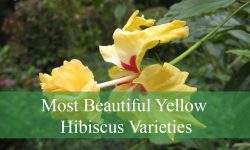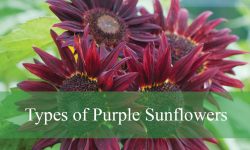Bonsai trees are more than just miniature plants; they are living works of art that embody patience, skill, and a deep connection to nature. Exploring the various types of bonsai trees opens up a world of possibilities for anyone interested in this unique horticultural practice. In this article, we’ll introduce you to 50 different types of bonsai trees, each with its own unique characteristics, ideal care requirements, and growth habits.
Choosing the right bonsai tree depends on whether it will be placed indoors or outdoors. Some species thrive inside, bringing beauty and tranquility to your home, while others are best suited for outdoor environments, where they can receive the fresh air and sunlight they need. The wide range of bonsai types allows for creative flexibility, making it easy to find the perfect tree for any space.
From indoor favorites like the Ficus and Jade Plant to outdoor staples such as Pine and Juniper, there’s a bonsai tree for every setting. This guide will help you explore 50 amazing types of bonsai trees, offering insights into their care, appearance, and the best environment for growth. Let’s dive in and discover which bonsai tree is right for you!
Coniferous Bonsai Trees
Pine Bonsai (Pinus spp.)
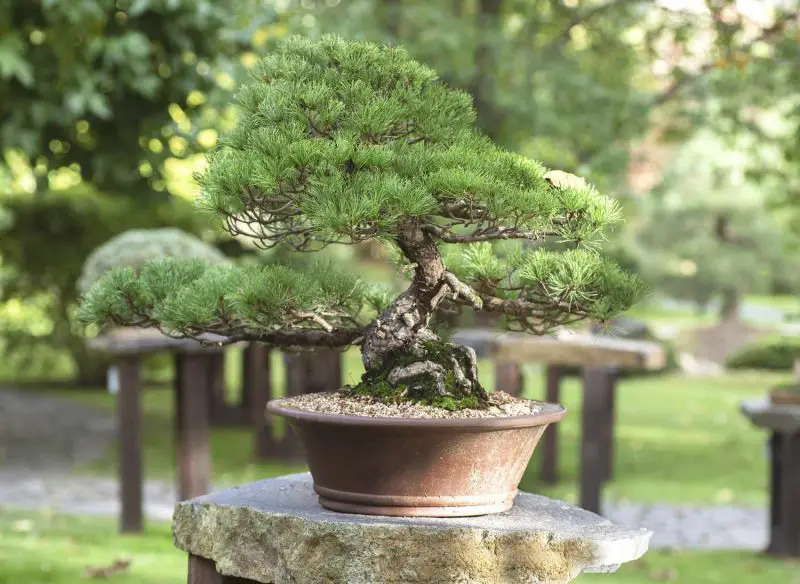
Pine bonsai trees, from the Pinus genus, are revered for their rugged appearance, long lifespans, and classic representation of strength and endurance in bonsai art. They typically feature stiff needles in clusters, flaky or fissured bark, and strong, angular branching. Popular species include Japanese Black Pine (Pinus thunbergii), Scots Pine (Pinus sylvestris), and Japanese White Pine (Pinus parviflora), each offering unique needle textures and growth characteristics.
Pines are best grown outdoors and require full sun for most of the day to develop strong needles and compact growth. They are hardy in USDA zones 3 through 9, depending on the species, and benefit greatly from seasonal changes, including a winter dormancy period. Indoor environments are unsuitable for pine bonsai due to their need for high light intensity and natural temperature fluctuations.
Care for pine bonsai involves a combination of precise techniques. Watering should be moderate—allowing the soil to dry slightly between waterings—but they should never be left dry for long periods. Pines require careful pruning and needle plucking to balance energy and maintain compact foliage. Wiring is typically done in late fall or early spring, and older branches should be handled gently due to brittleness. A well-draining soil mix and repotting every 3 to 5 years are essential for root health, while consistent feeding during the growing season helps sustain their slow, steady development.
Cedar Bonsai (Cedrus spp.)
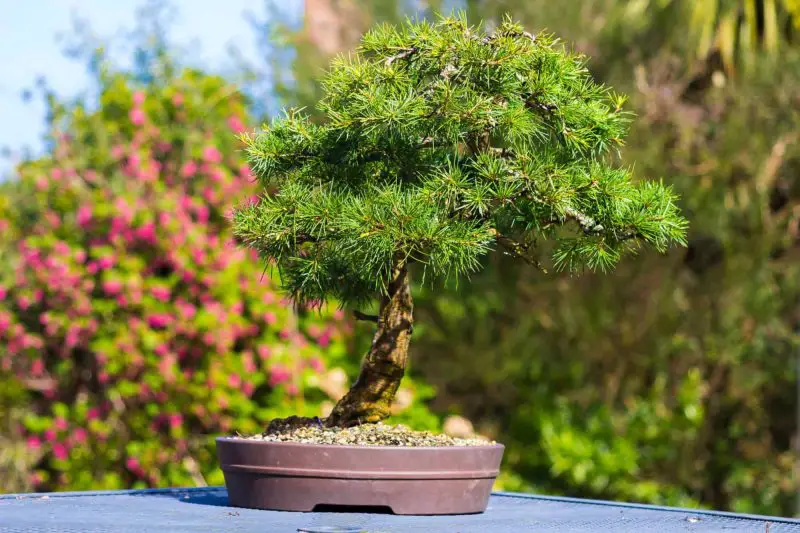
Cedar bonsai trees, from the Cedrus genus, are majestic evergreens known for their stiff, needle-like foliage, rugged bark, and strong horizontal branching. These trees naturally develop an elegant, layered look, which makes them ideal for formal upright and slanting bonsai styles. Popular species include the Atlas cedar (Cedrus atlantica), Deodar cedar (Cedrus deodara), and Lebanon cedar (Cedrus libani), all of which bring a commanding presence to any bonsai collection.
Cedar bonsai prefer to be grown outdoors in a sunny location, where they receive plenty of light and fresh air. They are hardy in USDA zones 6 through 9, depending on the species, and thrive best in mild, temperate climates. These trees do not do well indoors, as they require seasonal changes and natural light to maintain their health and vigor. In winter, they should be protected from heavy snow or harsh winds but still allowed to experience dormancy.
To care for a cedar bonsai, keep the soil moist but not soggy, and ensure excellent drainage. They respond well to regular fertilization during the growing season but should not be overfed. Pruning should be done in early spring before new growth begins, and wiring can be applied cautiously in late fall or winter, when branches are more flexible. Repotting every 3 to 5 years helps refresh the soil and promote root health. Patience is key, as cedars grow slowly but reward the bonsai artist with graceful, stately beauty over time.
Spruce Bonsai (Picea spp.)
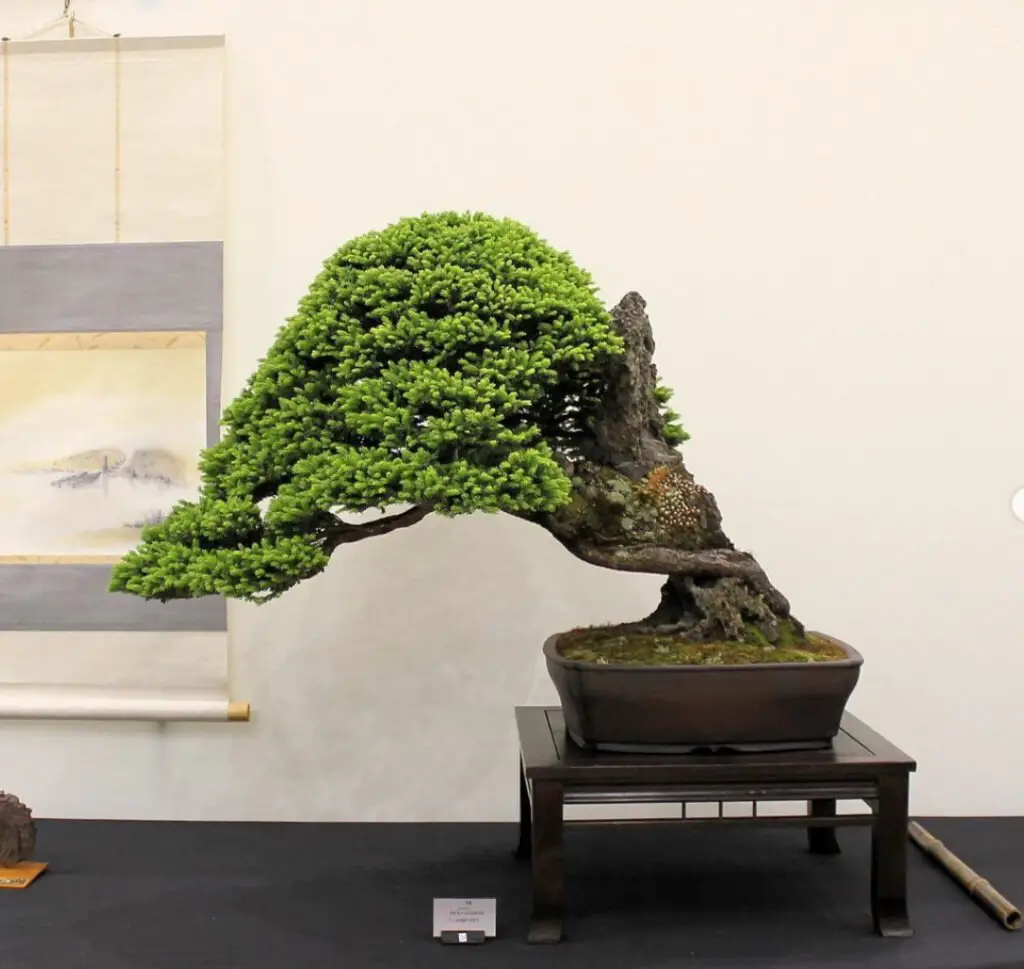
Spruce bonsai trees, part of the Picea genus, are known for their symmetrical shape, short needle-like foliage, and rugged bark that develops rich character as they age. These evergreens display a natural pyramidal form that lends itself well to formal upright and informal upright bonsai styles. Popular species used for bonsai include the Norway spruce (Picea abies) and the Colorado blue spruce (Picea pungens), valued for their fine, dense needles and vibrant coloring.
Spruce trees thrive in outdoor conditions and prefer a location with full sun or partial shade. They are cold-hardy and do best in USDA zones 2 through 7, depending on the species. While they enjoy fresh air and seasonal changes, they should be protected from extremely dry winter winds and intense summer heat, especially when grown in shallow bonsai containers. Consistent moisture and good airflow around the roots are crucial for healthy growth.
To care for a spruce bonsai, ensure the soil stays slightly moist—never soggy or completely dry. Pruning should be done in early spring before new growth appears, and wiring is best applied during the dormant season to avoid damaging brittle branches. Repotting is generally needed every 3 to 5 years, and a well-draining soil mix is essential. Regular fertilization during the growing season will keep the tree vigorous, but avoid overfeeding, which can lead to excessive elongation of needles.
Juniper Bonsai (Juniperus spp.)

Juniper bonsai trees are among the most iconic and beginner-friendly bonsai varieties, prized for their elegant foliage, twisting trunks, and tolerance to shaping. Belonging to the Juniperus genus, these evergreens feature either scale-like or needle-like leaves, depending on the species and age. Their natural growth habit lends itself beautifully to styles such as cascade, semi-cascade, and informal upright, making them highly versatile for bonsai enthusiasts.
Junipers thrive best outdoors in full sun, where they can receive plenty of light and airflow. They are hardy in USDA zones 4 through 9 and require seasonal variation to stay healthy. Indoor cultivation is not ideal for juniper bonsai, as they can quickly weaken without adequate sunlight and fresh air. In winter, they need protection from severe frost but still benefit from a cool dormancy period outdoors.
Caring for a juniper bonsai involves allowing the soil to dry slightly between waterings, as they dislike constantly wet roots. Pruning should be done by pinching new growth rather than cutting with scissors, to avoid browning. Wiring is generally easy with juniper due to its flexible branches, but care should be taken not to scar the bark. Use a well-draining soil mix and repot every 2 to 3 years in early spring to ensure the roots remain healthy and compact. Regular fertilization during the growing season helps maintain vibrant foliage and a strong root system.
Cypress Bonsai (Chamaecyparis spp.)
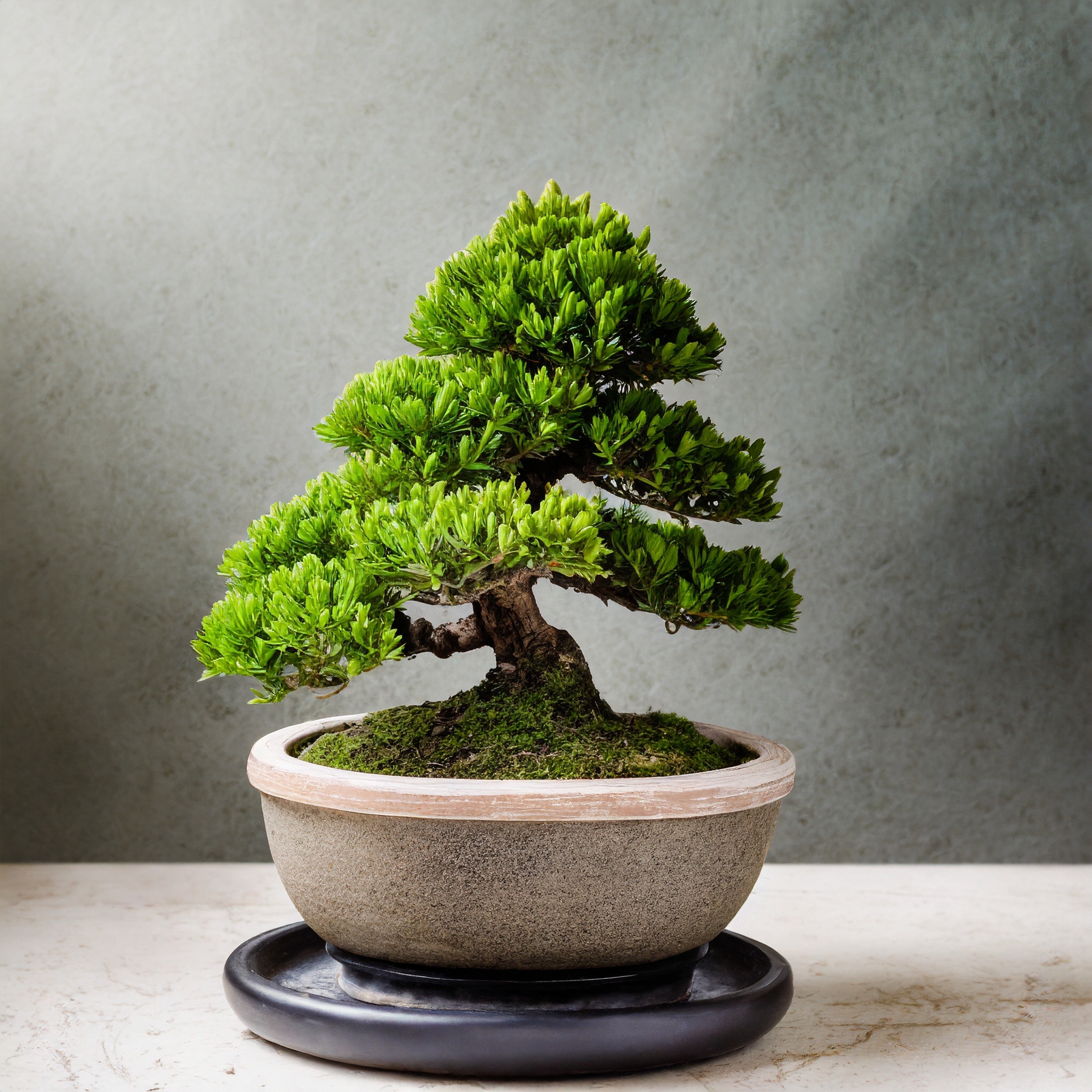
Cypress bonsai trees, particularly from the Chamaecyparis genus (like Hinoki cypress), are prized for their delicate, fan-shaped foliage and naturally conical growth habit. The small scale-like leaves form dense, flat sprays that give the tree a graceful, soft texture. Its bark matures to a reddish-brown hue that peels in thin strips, adding an aged appearance.
These bonsai are best suited for outdoor cultivation, thriving in full sun to partial shade with good air circulation. Cypress trees prefer cool, moist climates and should not be kept indoors long-term. They grow well in USDA zones 4 to 8, and need protection from extreme heat and drying winds, which can damage the foliage.
To care for a cypress bonsai, keep the soil evenly moist and never allow it to dry out completely. Use well-draining soil and prune regularly to maintain the tree’s elegant structure. Fertilize every two weeks during the growing season and repot every 2–3 years in early spring before new growth begins.
Larch Bonsai (Larix spp.)
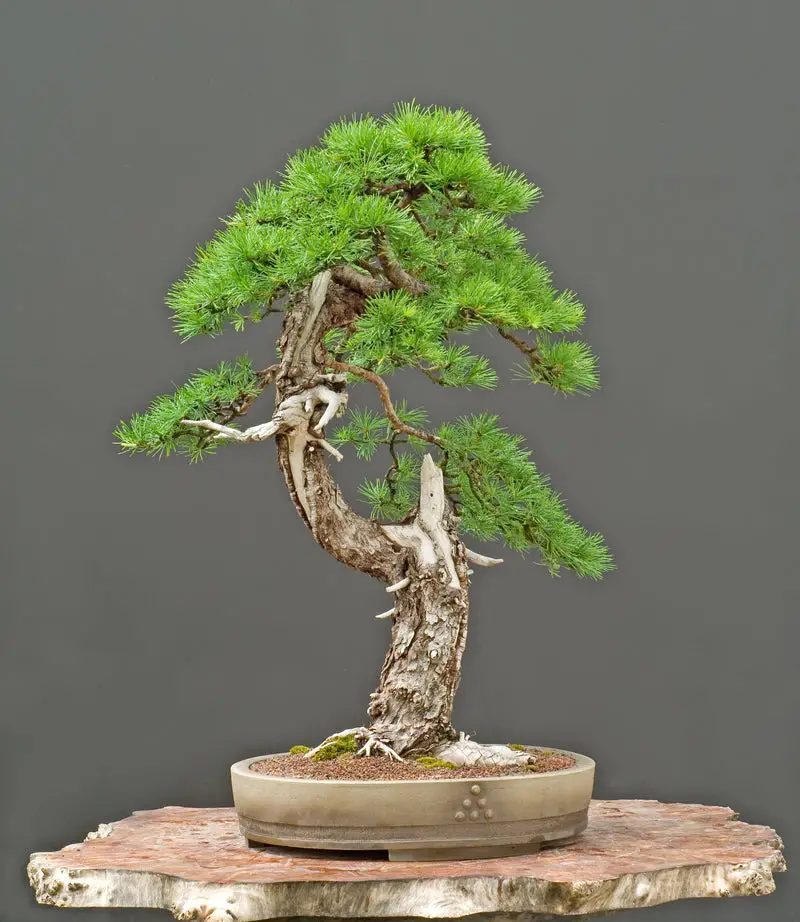
Larch bonsai are unique among conifers because they are deciduous, shedding their needle-like leaves in autumn. During the growing season, larch trees display soft, light green needles that turn golden-yellow before dropping. Their naturally upright form and rugged bark make them ideal for dramatic bonsai designs such as formal upright or forest styles.
This species must be grown outdoors, as it requires seasonal changes and full sun exposure. Larch bonsai are cold-hardy and perform well in USDA zones 2 to 6. They need a dormancy period in winter to stay healthy, and should never be kept indoors year-round.
Caring for a larch bonsai includes frequent watering, especially during active growth, as it dislikes dry soil. Pruning is best done in early spring or midsummer to shape the tree. Use a fast-draining soil mix and repot every two to three years in early spring, just before bud break. Regular fertilization during the growing season helps promote healthy development.
Hemlock Bonsai (Tsuga spp.)
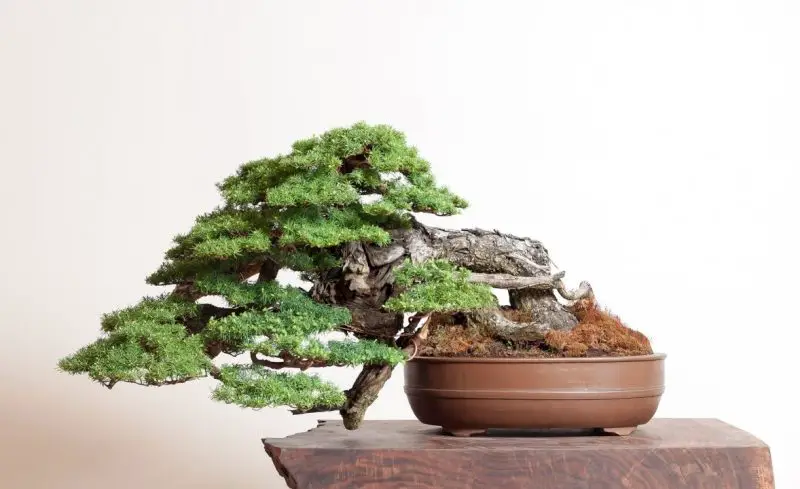
Hemlock bonsai trees, particularly the Eastern hemlock (Tsuga canadensis), are valued for their soft, flat needles and naturally graceful, drooping branches. The foliage is deep green with silvery undersides, and the tree develops rough, furrowed bark with age. Hemlocks are often styled in informal upright or slanting forms to showcase their elegant lines.
This species thrives outdoors in cooler climates with partial shade to full sun, although protection from harsh midday sun is recommended. It prefers moist, well-draining soil and moderate humidity. Hemlocks are hardy in USDA zones 3 to 7, making them ideal for temperate regions, but they are not suitable for year-round indoor growth.
To care for a hemlock bonsai, water consistently to maintain slight moisture in the soil, as the roots are sensitive to drought. Prune lightly throughout the growing season to maintain shape without stressing the tree. Fertilize monthly with a balanced formula and repot every 3–4 years in early spring, using an airy, organic-rich bonsai soil mix.
Broadleaf Evergreen Bonsai Trees
Ficus Bonsai

Ficus bonsai is one of the most popular indoor bonsai trees due to its adaptability and attractive appearance. It typically features a thick trunk, aerial roots, and small oval-shaped leaves that are glossy and vibrant green. This tree can be styled into various traditional bonsai shapes and is ideal for beginners because of its resilience.
Ficus prefers bright, indirect sunlight but can also tolerate lower light conditions, making it suitable for indoor environments. It thrives in temperatures between 60°F and 75°F (15°C to 24°C) and does not tolerate frost. Regular watering is important, but the soil should not stay waterlogged—allow it to dry slightly between waterings.
To care for a ficus bonsai, prune regularly to maintain shape and encourage dense foliage. Repotting should be done every 2–3 years in early spring, using well-draining bonsai soil. Feeding with a balanced liquid fertilizer every two weeks during the growing season helps keep it healthy and vibrant indoors.
Jade Bonsai (Crassula ovata)
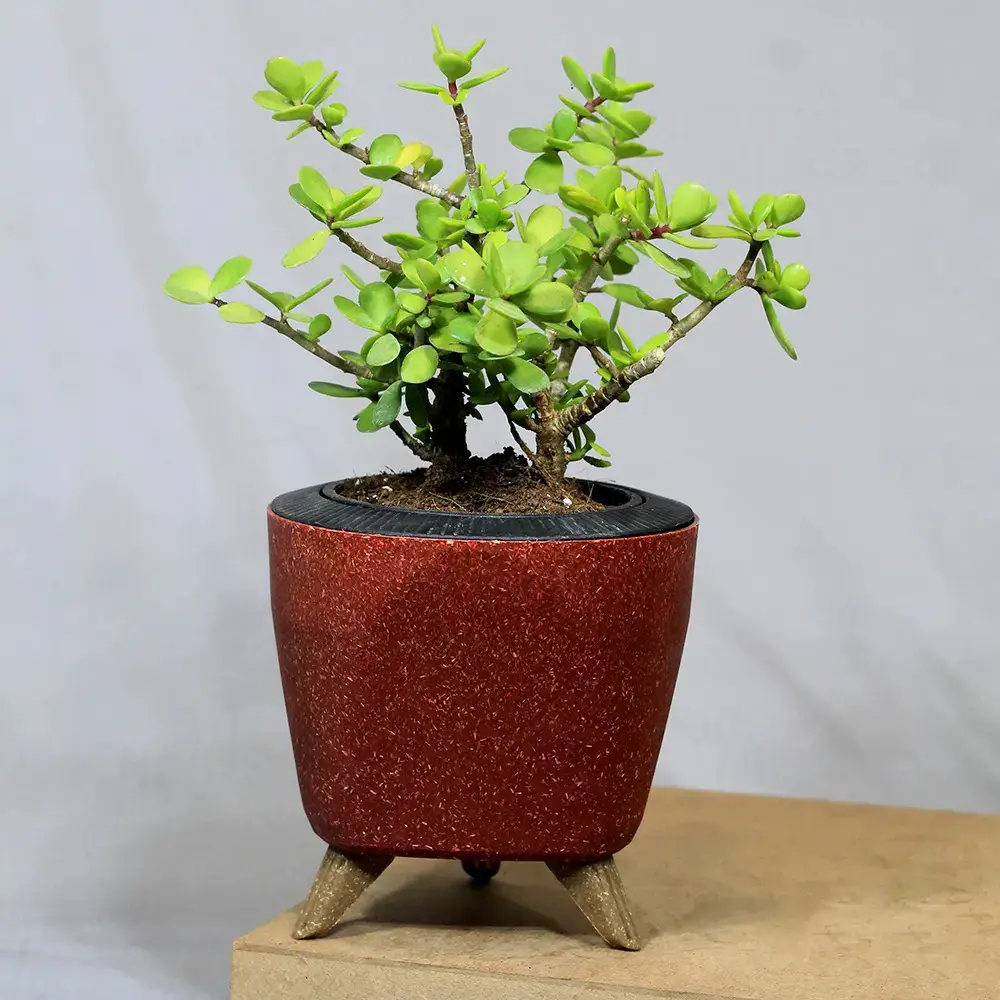
Jade bonsai, also known as the money tree or lucky plant, is a succulent bonsai known for its thick, fleshy, oval-shaped leaves and gnarled trunk. Its compact structure and ability to retain water in its leaves make it a beautiful and low-maintenance indoor bonsai. Over time, the trunk becomes woody, giving the tree an aged look.
This species thrives in warm, dry environments and requires bright light—ideally placed near a south-facing window. Because it stores moisture in its leaves, jade bonsai is drought-tolerant and does not require frequent watering. It’s important to use a cactus or succulent potting mix with good drainage to prevent root rot.
Care includes minimal watering (only when the soil is dry), light pruning to control size and shape, and repotting every 3–4 years. Avoid overwatering, especially in cooler months, and fertilize monthly during spring and summer using a diluted succulent fertilizer. It’s ideal for indoor bonsai enthusiasts looking for a hardy option.
Schefflera Bonsai (Schefflera arboricola)
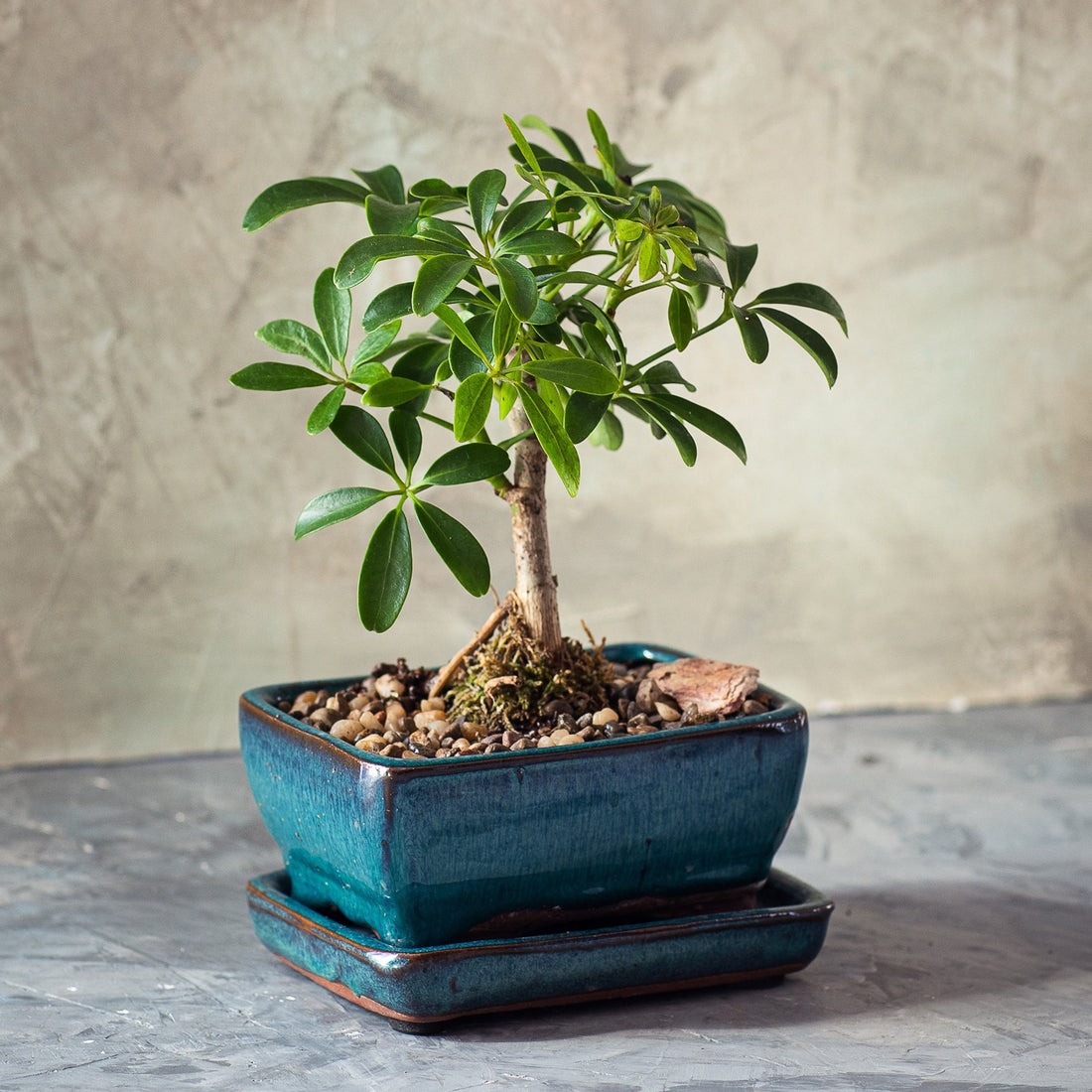
Schefflera bonsai, also known as the dwarf umbrella tree, features compound leaves with glossy green leaflets that spread out like the spokes of an umbrella. It has a unique tropical appearance, and with proper pruning, it can be trained into stunning bonsai forms with aerial roots and thick trunks.
This plant thrives in warm indoor environments with high humidity and bright, indirect sunlight. It prefers temperatures between 65°F and 75°F (18°C to 24°C) and should be protected from cold drafts or sudden temperature changes. While it can tolerate some shade, inadequate light will reduce leaf density and vigor.
Schefflera bonsai needs regular pruning to maintain its shape and encourage bushier growth. Water thoroughly when the topsoil becomes dry, but ensure the pot has proper drainage. Fertilize every two weeks during the growing season and repot every two years with fresh, well-draining soil to keep it healthy indoors.
Weeping Fig Bonsai (Ficus benjamina)
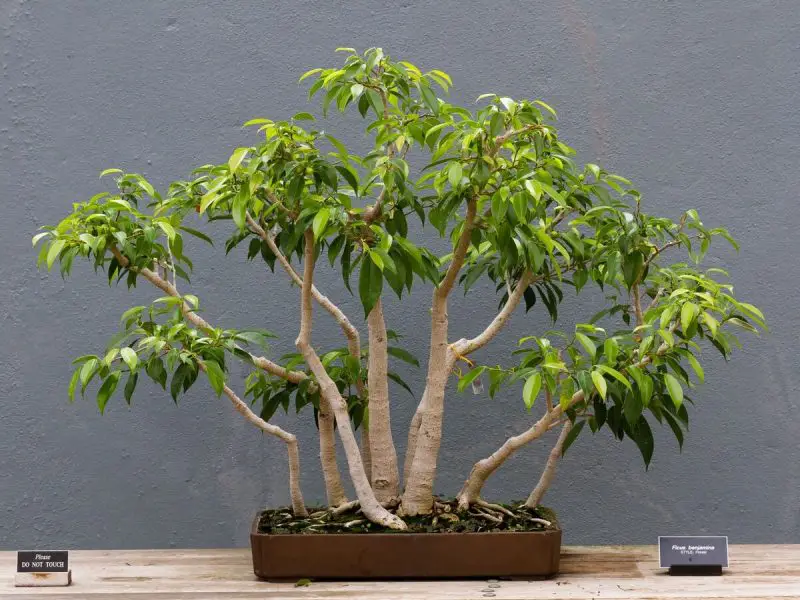
Weeping Fig bonsai, scientifically known as Ficus benjamina, is a popular tropical bonsai species valued for its elegant, arching branches and glossy, oval-shaped green leaves that taper to a point. The tree often develops aerial roots when grown in high humidity, adding a dramatic visual element that reflects its native rainforest origins. Its dense foliage and graceful canopy make it ideal for informal upright or banyan-style bonsai.
This species thrives in indoor environments, making it an excellent choice for beginners or those without outdoor growing space. It prefers bright, indirect sunlight and stable indoor temperatures between 60–75°F (15–24°C). Although it can adapt to lower light levels, its growth may slow down and become sparse. In USDA zones 10–12, it can be grown outdoors year-round but must be protected from cold drafts and frost.
To care for a Weeping Fig bonsai, keep the soil consistently moist but not soggy, and allow the top layer to dry slightly between waterings. Regular pruning is important to maintain its shape and encourage branching, especially since this species tends to grow rapidly under ideal conditions. Fertilize monthly during the growing season with a balanced, diluted liquid fertilizer. Repot every 2 to 3 years to refresh the soil and prevent root-bound conditions. With proper care, this fig can develop into a stunning and resilient bonsai centerpiece.
Serissa Bonsai (Serissa foetida)
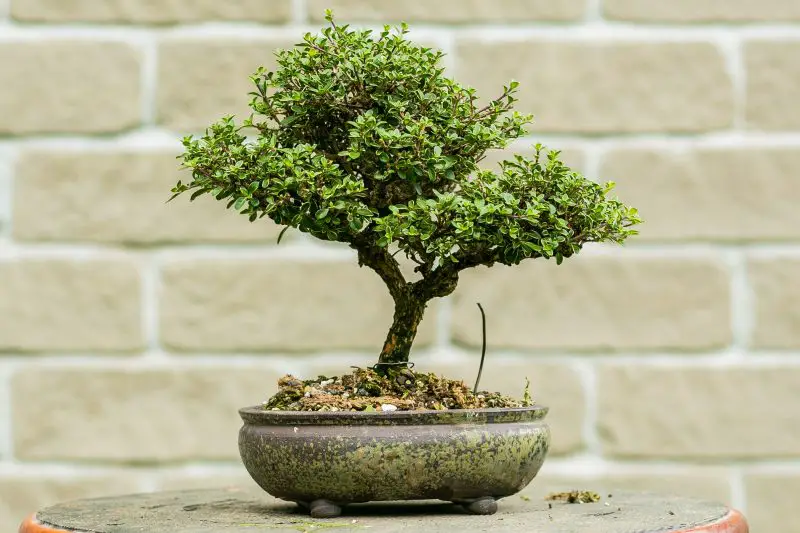
Serissa bonsai, often called the “Tree of a Thousand Stars,” is cherished for its delicate white or pink flowers that bloom year-round in the right conditions. It has small, dark green leaves and a finely branched structure, giving it a refined, elegant look. Its bark becomes gnarled and textured with age, adding to its beauty.
This bonsai prefers a warm, bright location with plenty of indirect sunlight and steady temperatures around 68°F to 77°F (20°C to 25°C). Serissa is sensitive to environmental changes, so avoid moving it frequently. It requires moderate humidity, making it ideal for a sunny windowsill with occasional misting.
Care includes regular watering to keep the soil slightly moist—not too dry or soggy. Prune after flowering to maintain shape and remove dead blooms. Fertilize every two weeks in spring and summer with a balanced bonsai fertilizer, and repot annually in early spring using well-draining soil to prevent root rot.
Boxwood Bonsai (Buxus spp.)
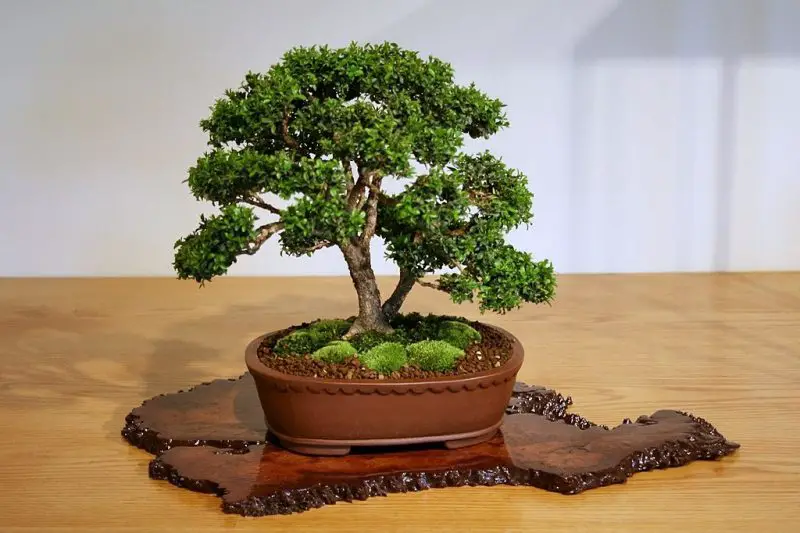
Boxwood bonsai are favored for their compact, dense foliage and naturally slow growth, making them ideal for detailed bonsai shaping. Their small, rounded, leathery green leaves grow in tight clusters, giving the tree a refined appearance. With age, the bark becomes textured and gnarled, adding visual depth and maturity.
This bonsai tree thrives in partial to full sun and prefers mild temperatures, ideally between 55°F and 75°F (13°C to 24°C). While it is hardy in USDA zones 6 to 9, boxwood can be grown indoors in a well-lit space but does best outdoors with protection from extreme heat or frost. It prefers well-draining soil and moderate humidity.
Care involves regular pruning to maintain its compact shape and prevent legginess. Water when the topsoil begins to dry, but avoid overwatering, which can lead to root rot. Fertilize every 3–4 weeks during the growing season and repot every 2–3 years, preferably in early spring or late fall.
Olive Bonsai (Olea europaea)
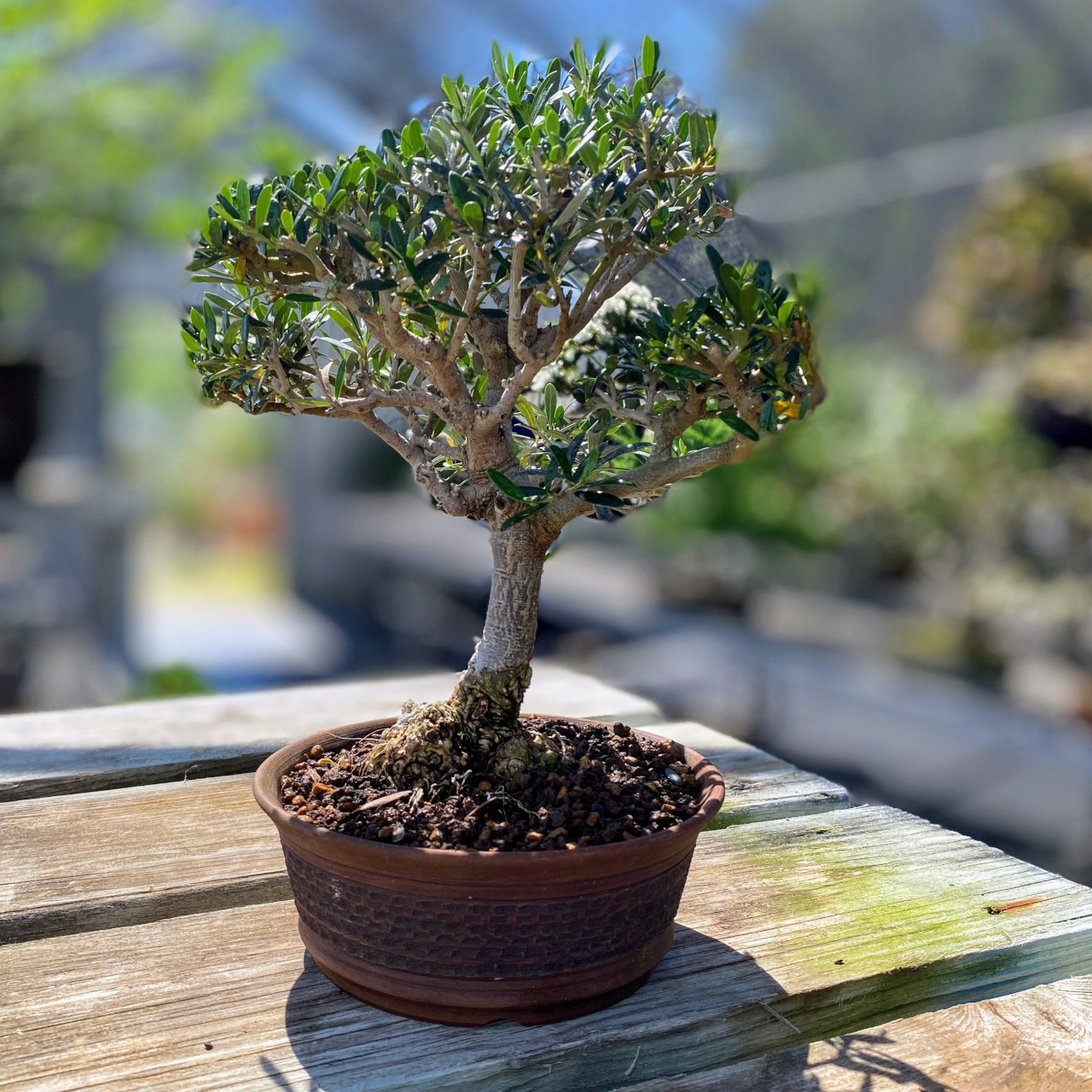
Olive bonsai trees offer a Mediterranean flair with their slender gray-green leaves, twisted trunks, and rugged bark. Mature specimens may produce tiny white flowers and even miniature olives. Their aged, weathered look makes them perfect for bonsai styles like informal upright or slanting.
Olive bonsai prefers full sun and warm, dry conditions, thriving in USDA zones 9 to 11. It can be grown indoors if provided with ample light—ideally from a south-facing window or under grow lights. However, it prefers outdoor conditions where it can receive intense sunlight and airflow.
To care for an olive bonsai, use well-draining soil and water sparingly, allowing the soil to dry slightly between waterings. Prune during late spring or summer to shape the tree and encourage ramification. Fertilize every two weeks during the growing season and repot every 2–3 years in spring.
Cotoneaster Bonsai (Cotoneaster spp.)
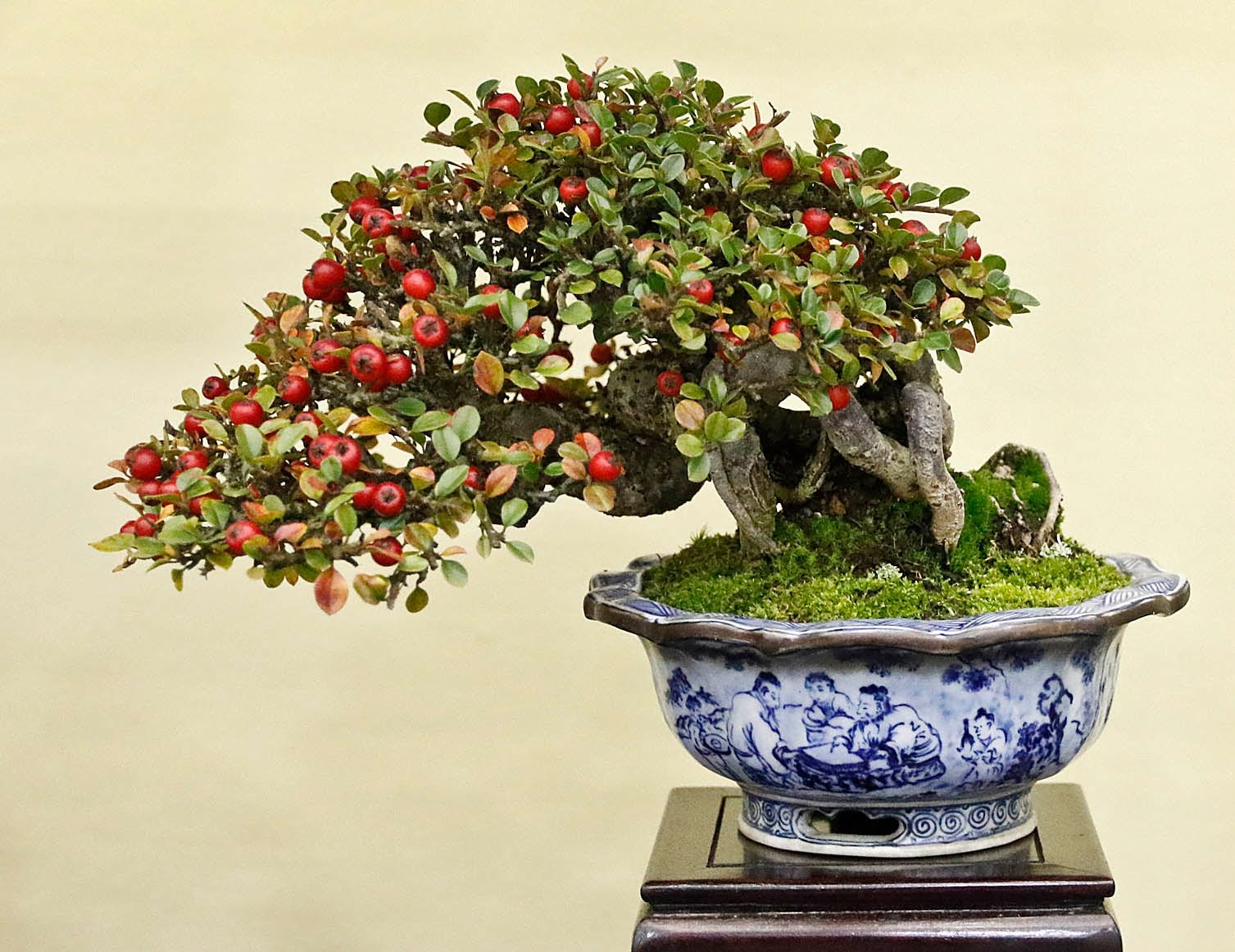
Cotoneaster bonsai trees are admired for their tiny oval leaves, delicate white or pink flowers, and vibrant red berries that appear in fall and winter. Their low, arching growth habit and small leaf size make them highly suited for bonsai aesthetics, particularly in cascade and informal styles.
These trees prefer full sun but can tolerate partial shade, making them suitable for outdoor growing. Cotoneaster is cold-hardy in USDA zones 5 to 8 and benefits from seasonal temperature changes. While it can be kept indoors temporarily, it performs best outdoors where it gets more light and air movement.
Care involves frequent pruning to maintain its miniature structure and enhance berry production. Water regularly during the growing season but avoid soggy conditions. Use well-draining soil, fertilize monthly from spring to fall, and repot every 2–3 years in early spring to encourage healthy root growth.
Azalea Bonsai (Rhododendron spp.)
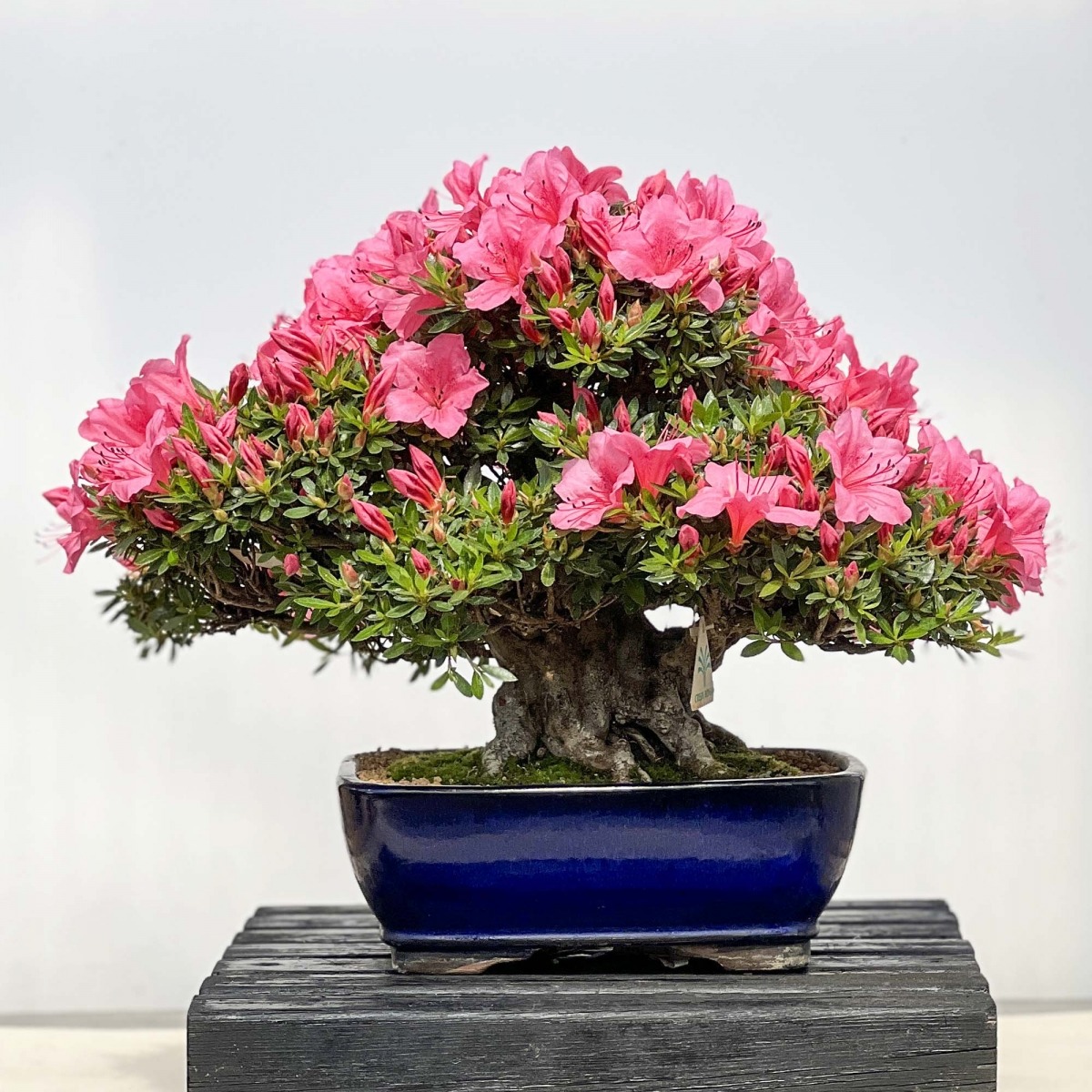
Azalea bonsai, especially from the Rhododendron indicum and Rhododendron simsii groups, are cherished for their profuse springtime blooms in vivid shades of pink, red, white, or purple. Their fine branches, small dark green leaves, and showy flowers make them a favorite among bonsai enthusiasts. With age, the bark becomes slightly textured and light-colored, adding to their visual elegance.
Azaleas thrive outdoors in filtered sunlight or partial shade and prefer cooler temperatures, especially during the flowering season. They are hardy in USDA zones 6 to 9, but they should be protected from harsh sun and strong winds, which can damage the delicate blooms. Azaleas do not tolerate root dryness, making proper watering essential.
Caring for an azalea bonsai involves maintaining slightly acidic, well-draining soil and keeping it consistently moist, especially during blooming. Prune right after flowering to maintain shape and promote new buds. Fertilize with a low-nitrogen or azalea-specific fertilizer during the growing season and repot every two years in spring.
Camellia Bonsai (Camellia japonica)
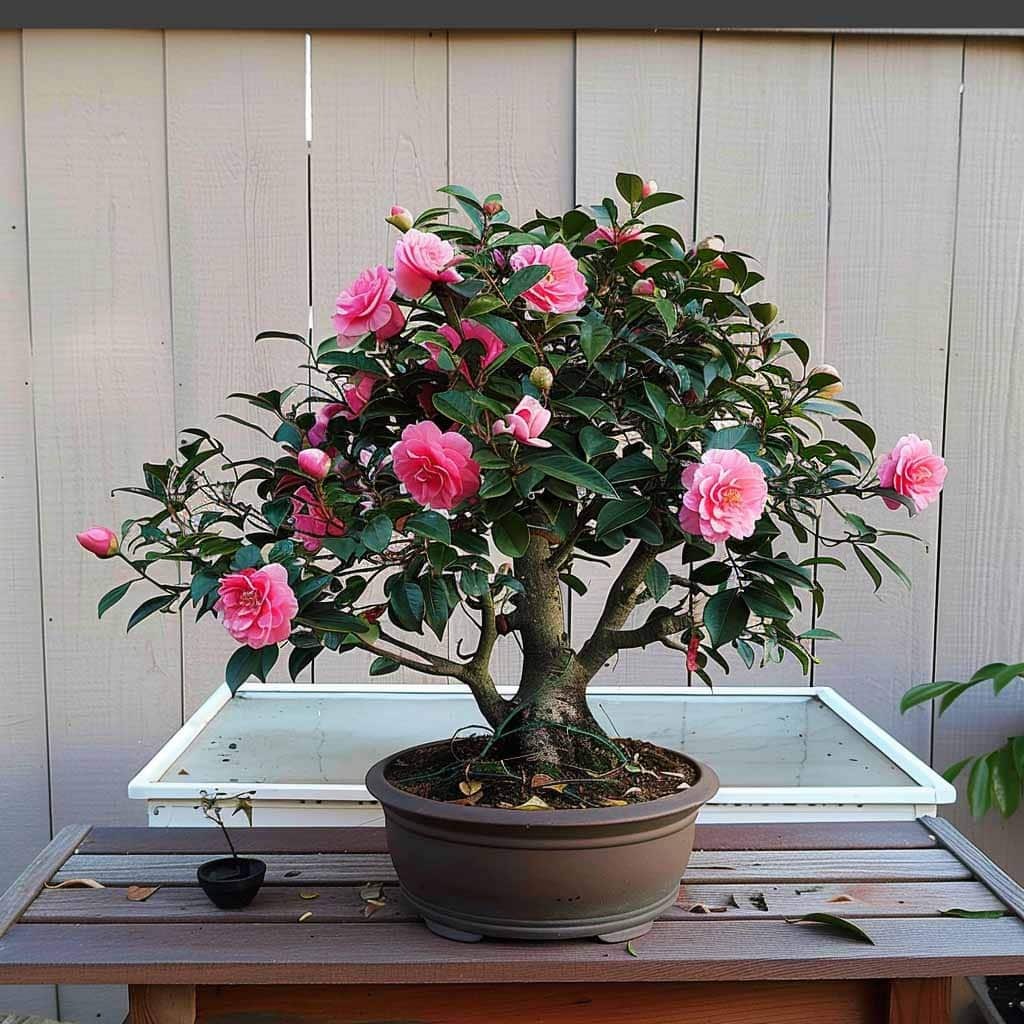
Camellia bonsai trees are loved for their elegant, glossy dark green leaves and large, rose-like flowers that bloom in winter or early spring. The blossoms come in shades of red, pink, or white, and the foliage stays attractive year-round. Camellias have a naturally compact growth habit, making them ideal for bonsai cultivation.
These trees prefer bright, indirect light and cool conditions with high humidity. They thrive in USDA zones 7 to 9 and should be kept outdoors in partial shade, especially during the heat of summer. Though they can be overwintered indoors, camellias generally prefer outdoor environments where temperature fluctuations are more natural.
Camellia bonsai require acidic, well-draining soil and frequent watering to prevent the soil from drying out. Use rainwater if possible, as they are sensitive to hard water. Fertilize with a camellia or acid-loving plant fertilizer every 4–6 weeks during the growing season. Repot every 2–3 years in early spring before new growth begins.
Tea Tree Bonsai (Melaleuca spp.)
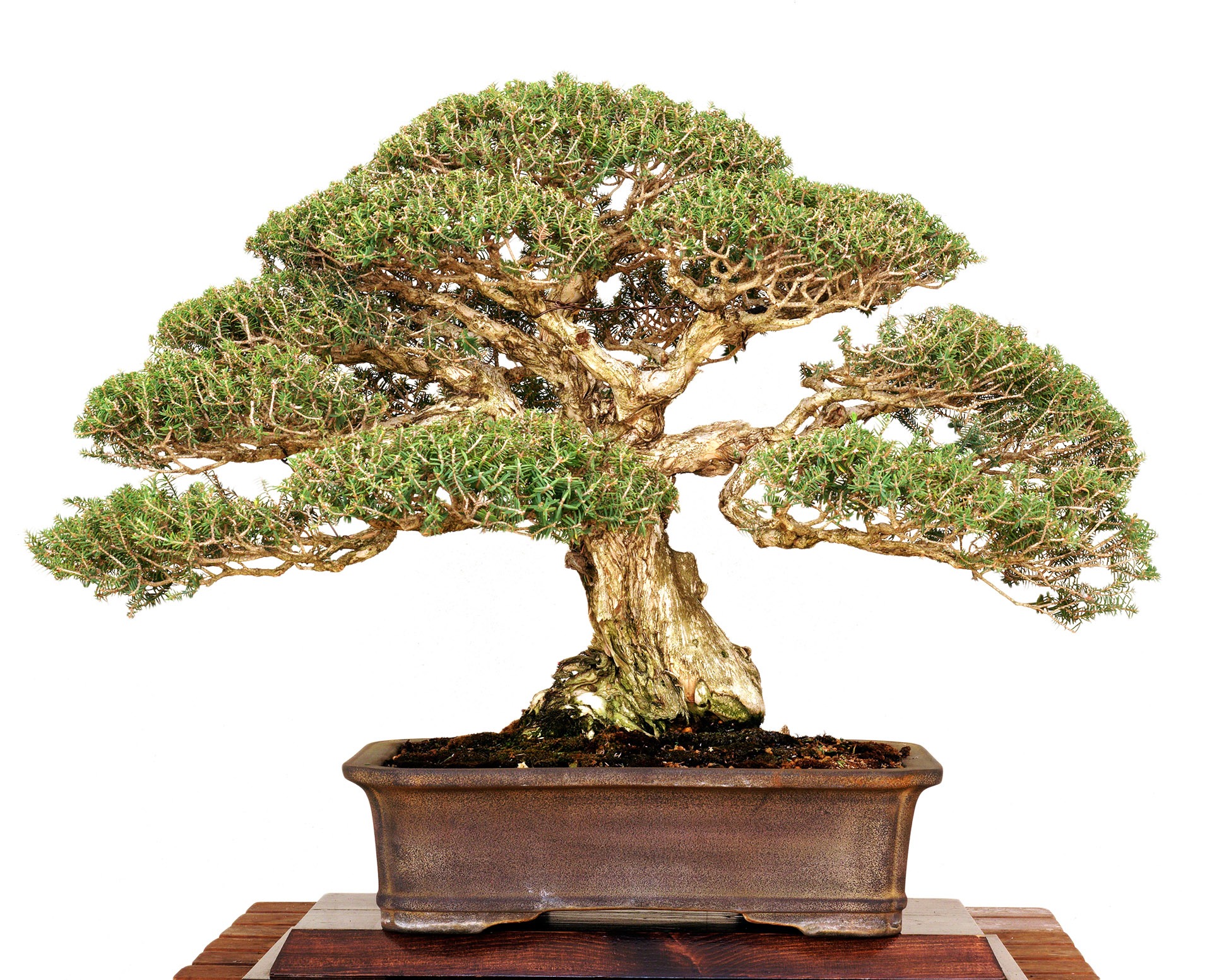
Tea Tree bonsai, typically from the Melaleuca alternifolia species, showcases slender, aromatic leaves and papery, peeling bark that reveals varied tones of cream and brown. It produces small, fluffy white or pink flowers resembling tiny brushes. Its natural shape is upright, and the fine foliage gives it a soft, delicate appearance.
This species thrives in full sun and warm, humid environments, making it well-suited to USDA zones 9 to 11. Though it prefers outdoor conditions, it can be grown indoors if placed in a bright spot with good airflow. Tea Tree bonsai are not frost-tolerant and should be protected during cold weather.
Care involves using sandy, well-draining soil and maintaining consistent moisture. Prune regularly to encourage branching and maintain the desired shape. Fertilize monthly during the growing season, and repot every 2–3 years in early spring. Keep an eye out for pests, as the aromatic leaves may attract insects under stress.
Brush Cherry Bonsai (Syzygium paniculatum)
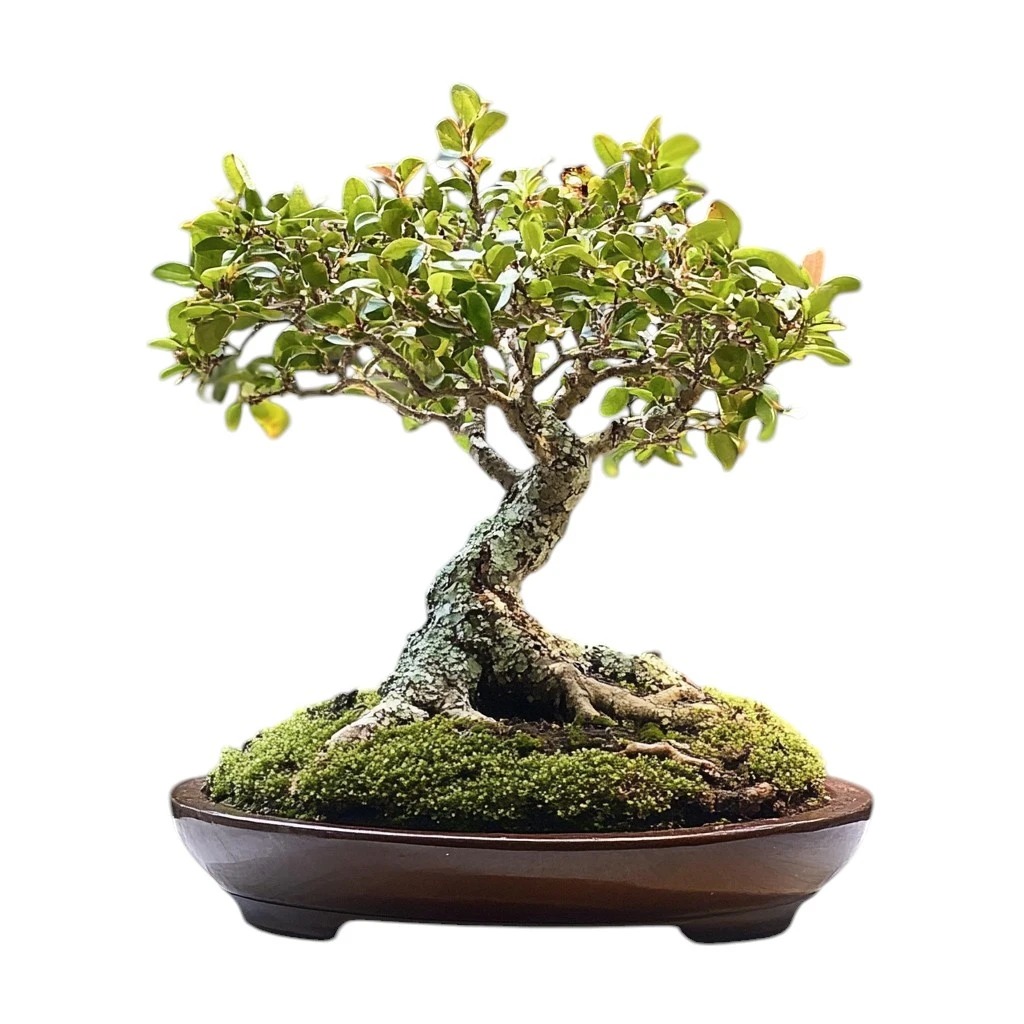
Brush Cherry bonsai is admired for its small, glossy green leaves, white fluffy flowers, and vibrant red or purple edible berries. The tree has a naturally bushy growth habit and forms a smooth gray bark that becomes more textured with age. Its compact foliage and ornamental fruit make it a beautiful display tree.
This bonsai thrives in warm, humid climates and is best grown outdoors in USDA zones 9 to 11. However, it can adapt well to indoor conditions with sufficient sunlight—preferably near a south-facing window or under grow lights. It should be protected from frost, as it is sensitive to cold temperatures.
Caring for a brush cherry bonsai involves keeping the soil moist but not soggy. Use a well-draining bonsai mix and water when the topsoil feels slightly dry. Prune regularly to maintain shape and encourage new growth. Fertilize every two weeks during the growing season and repot every 2–3 years in spring.
Deciduous Bonsai Trees
Japanese Maple Bonsai (Acer palmatum)
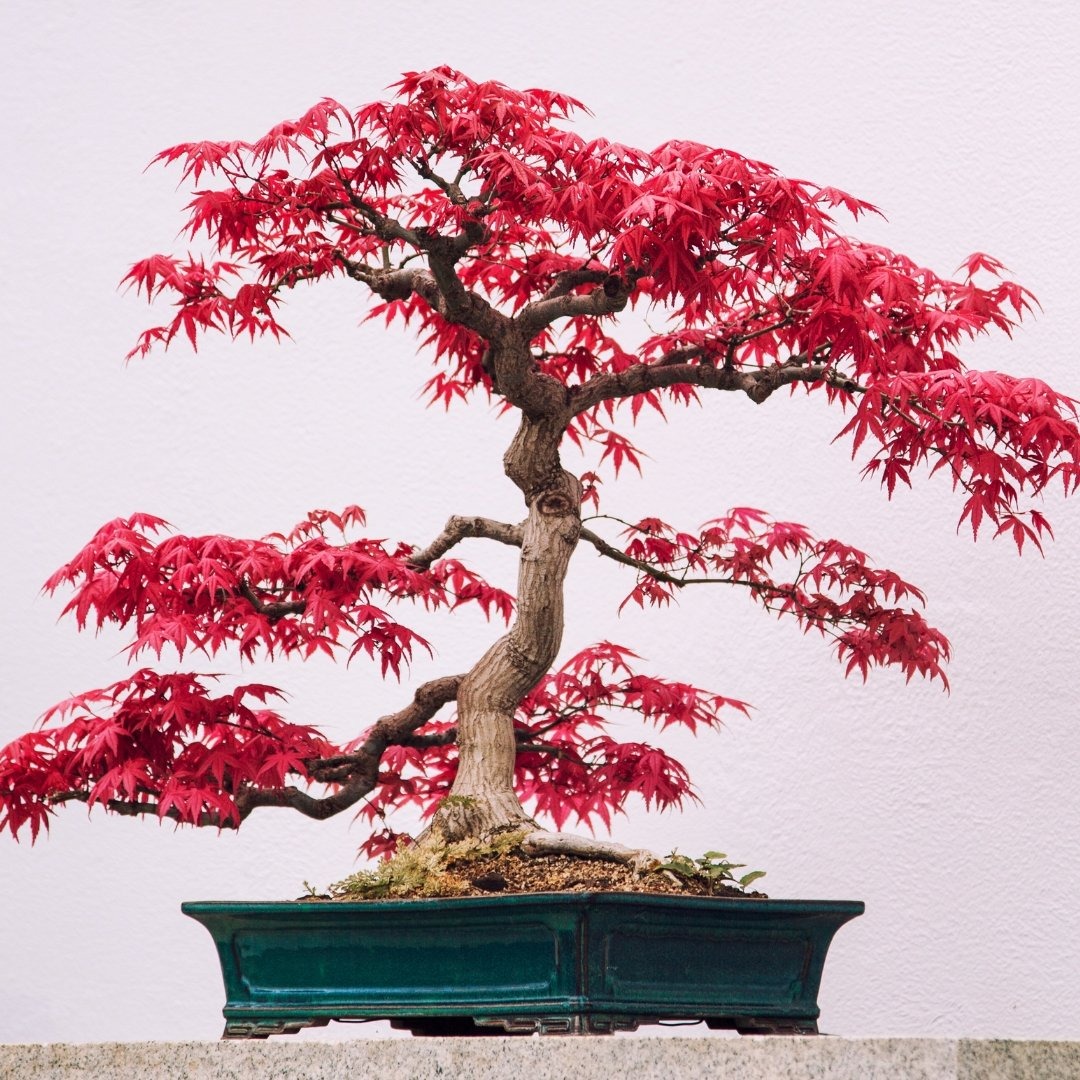
The Japanese Maple bonsai is one of the most popular and visually striking bonsai trees, known for its delicate, lobed leaves that change color dramatically throughout the seasons—ranging from bright green in spring to fiery red, orange, or yellow in fall. Its smooth bark, fine branching, and graceful form make it a favorite for both beginners and experienced growers. Dwarf cultivars with smaller leaves are especially suitable for bonsai aesthetics.
This tree prefers a temperate climate and thrives in USDA zones 5 to 8. It should be grown outdoors where it can experience seasonal changes, but it must be protected from extreme heat or late spring frosts, which can damage new growth. Japanese Maple bonsai grow best in partial shade, especially in hot climates, and require shelter from harsh afternoon sun.
To care for a Japanese Maple bonsai, use well-draining soil and keep the root zone consistently moist but not soggy. Prune during late spring or summer to shape and refine branching, avoiding heavy pruning in early spring when sap flow is strong. Repot every two years in early spring before the buds open, and feed regularly with balanced fertilizer during the growing season.
Trident Maple Bonsai (Acer buergerianum)
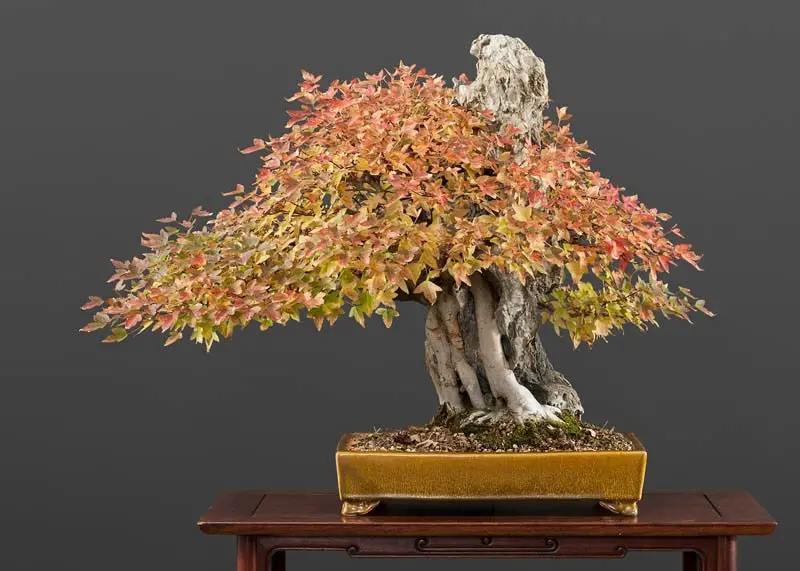
The Trident Maple bonsai is cherished for its three-lobed leaves, smooth orange-brown bark, and strong tapering trunk that gives a sense of age and strength. Its foliage turns brilliant shades of red, yellow, and orange in autumn, and the small leaves make it highly suitable for refined bonsai styles. It is often used in root-over-rock styles due to its vigorous root growth.
Native to China and Japan, the Trident Maple thrives in USDA zones 6 to 9 and is best grown outdoors in full sun or partial shade. It tolerates heat better than the Japanese Maple and is slightly more resilient to environmental stress. However, protection from harsh afternoon sun and wind is recommended for younger trees.
For proper care, plant the Trident Maple in well-draining bonsai soil and water consistently to keep the roots moist but not waterlogged. Prune throughout the growing season to maintain its shape and encourage ramification. Fertilize every two weeks with a balanced fertilizer during spring and summer. Repot every two to three years in early spring before the buds begin to swell.
Zelkova Bonsai (Zelkova serrata)
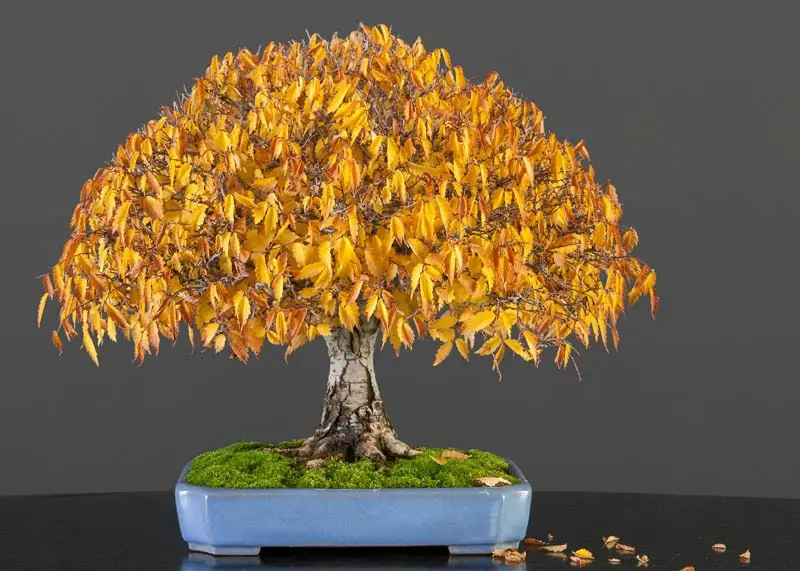
Zelkova bonsai, often called the Japanese Zelkova or False Elm, is admired for its elegant, upright form, finely serrated leaves, and smooth gray bark that exfoliates with age. It has a vase-like silhouette and excellent branch ramification, making it ideal for formal upright and broom-style bonsai. In autumn, the foliage turns golden yellow or red-orange.
This species prefers outdoor conditions and thrives in USDA zones 5 to 8. It enjoys full sun but benefits from light shade during the hottest part of summer. Zelkova is deciduous, meaning it sheds its leaves in winter, and it appreciates the natural dormancy provided by seasonal temperature shifts.
To maintain a healthy Zelkova bonsai, use a well-draining soil mix and water regularly, ensuring the soil stays moist but not soggy. Prune in early summer to refine shape and remove strong vertical shoots. Feed with a balanced fertilizer every two weeks during the growing season. Repot every two to three years in early spring while the tree is still dormant.
Beech Bonsai (Fagus spp.)
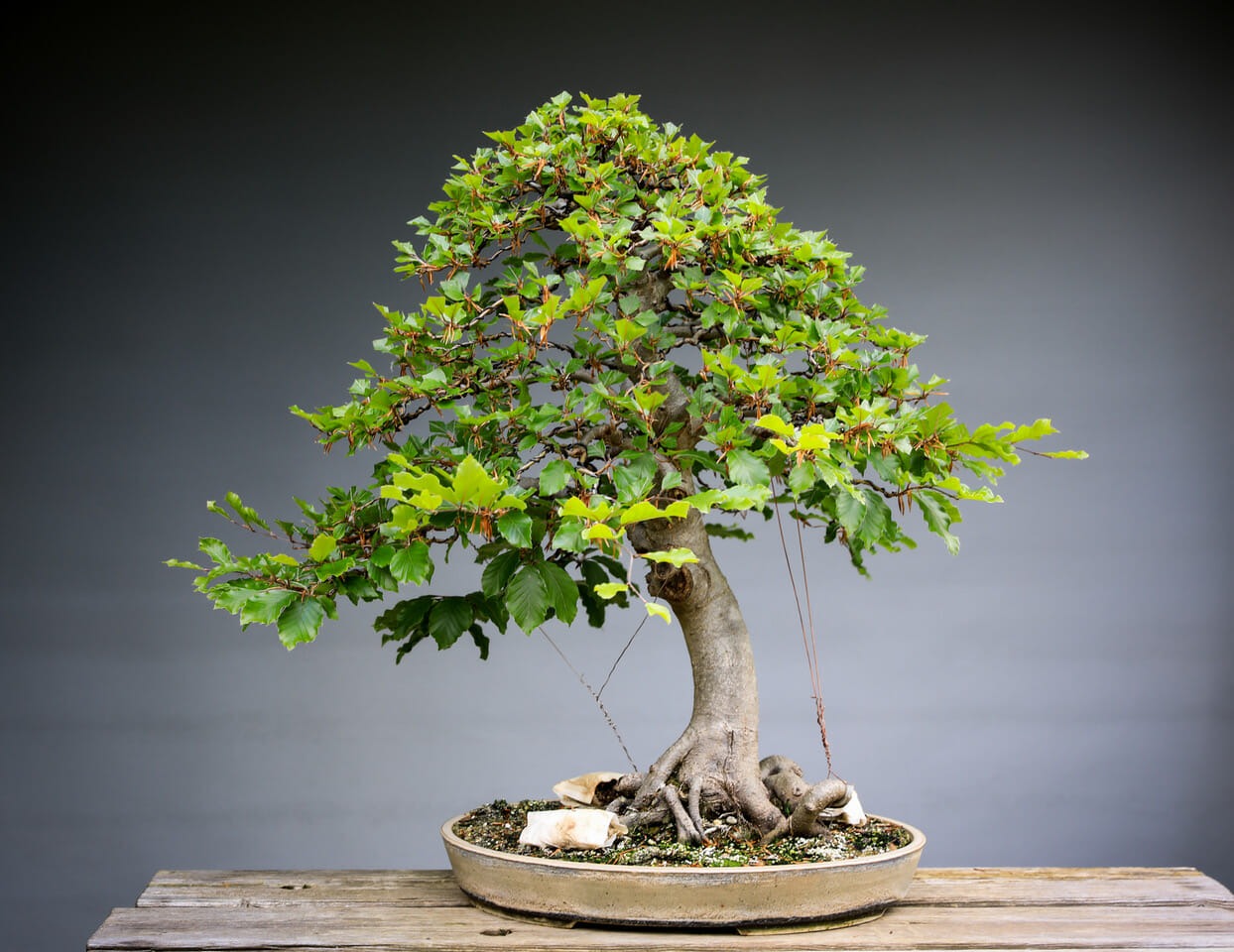
Beech bonsai, including both European Beech (Fagus sylvatica) and American Beech (Fagus grandifolia), are known for their smooth gray bark, elegant branches, and lustrous green leaves that often turn coppery brown and remain on the tree through winter. Their naturally tall and upright growth habits make them excellent for formal styles and forest-style bonsai arrangements.
Beech trees thrive in USDA zones 4 to 7 and require outdoor growing conditions with exposure to seasonal temperature changes. They prefer partial shade in hotter regions but do well in full sun in cooler climates. They are sensitive to dry winds and root dryness, so protection and proper watering are essential.
Use a well-draining bonsai soil mix and ensure consistent moisture, especially during the growing season. Prune new shoots during late spring and summer to refine the shape and encourage denser branching. Feed regularly with a balanced fertilizer and repot every three to four years in early spring, as beeches are slower-growing and do not need frequent repotting.
Elm Bonsai (Ulmus spp.)
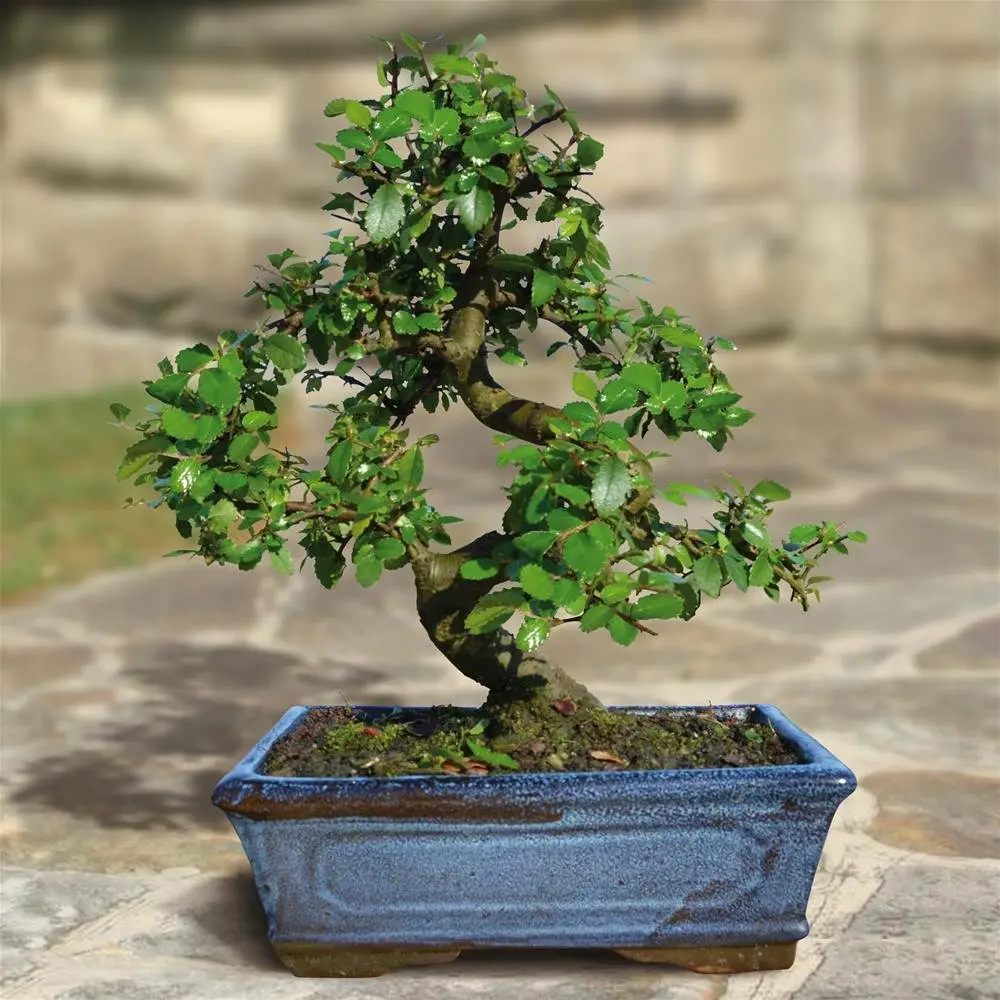
Elm bonsai are a popular choice due to their adaptability, fine branching, and small, serrated leaves that respond well to pruning. Common varieties include the Chinese Elm (Ulmus parvifolia) and American Elm (Ulmus americana). They exhibit beautiful bark textures—smooth or mottled—and have a naturally elegant, upright form with excellent ramification potential.
Elms grow well in a wide range of climates and are hardy in USDA zones 5 to 9, depending on the species. They can be grown indoors or outdoors, though outdoor growth is usually preferred for better health and seasonal development. Chinese Elms, in particular, are tolerant of pruning and environmental fluctuations, making them ideal for beginners.
For care, use a free-draining bonsai soil mix and maintain consistent moisture levels. Prune regularly during the growing season to maintain shape and encourage a fine branch structure. Fertilize every two weeks in spring and summer with a balanced formula, and repot every two to three years in early spring, removing no more than a third of the root mass.
Hornbeam Bonsai (Carpinus spp.)
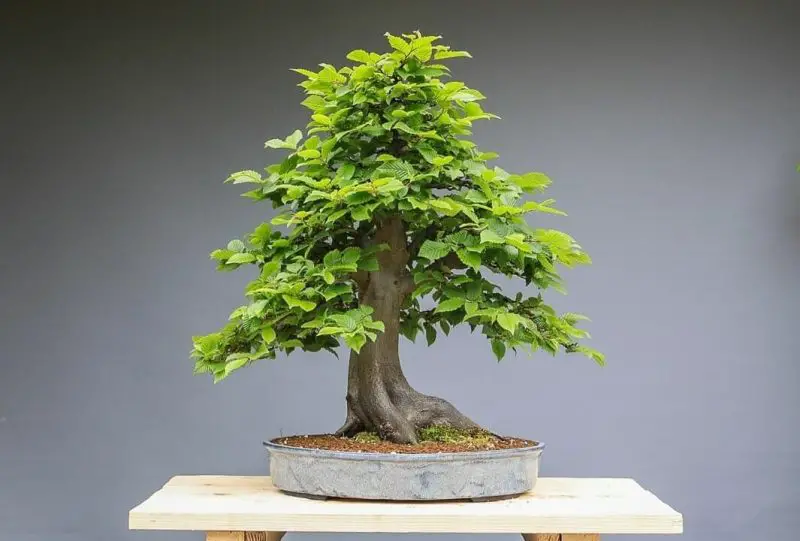
Hornbeam bonsai, such as the European Hornbeam (Carpinus betulus) and Korean Hornbeam (Carpinus coreana), are treasured for their fine branching, attractive gray bark, and neatly serrated oval leaves. They develop strong trunks with age and produce vibrant fall color, ranging from golden yellow to deep orange. Their winter silhouette is especially striking when leaves drop.
These trees prefer outdoor environments and grow best in USDA zones 4 to 8. Hornbeams enjoy full sun to partial shade and tolerate colder climates well, requiring a winter dormancy period. Korean Hornbeam is particularly prized for its smaller leaves and compact growth, making it more suited to refined bonsai styles.
Hornbeam bonsai require moist but well-draining soil. Keep the soil consistently damp, especially in hot weather, as they are sensitive to drought. Prune during the growing season to maintain shape and encourage ramification. Feed monthly with balanced fertilizer and repot every two to three years in early spring, just as buds begin to swell.
Ginkgo Bonsai (Ginkgo biloba)
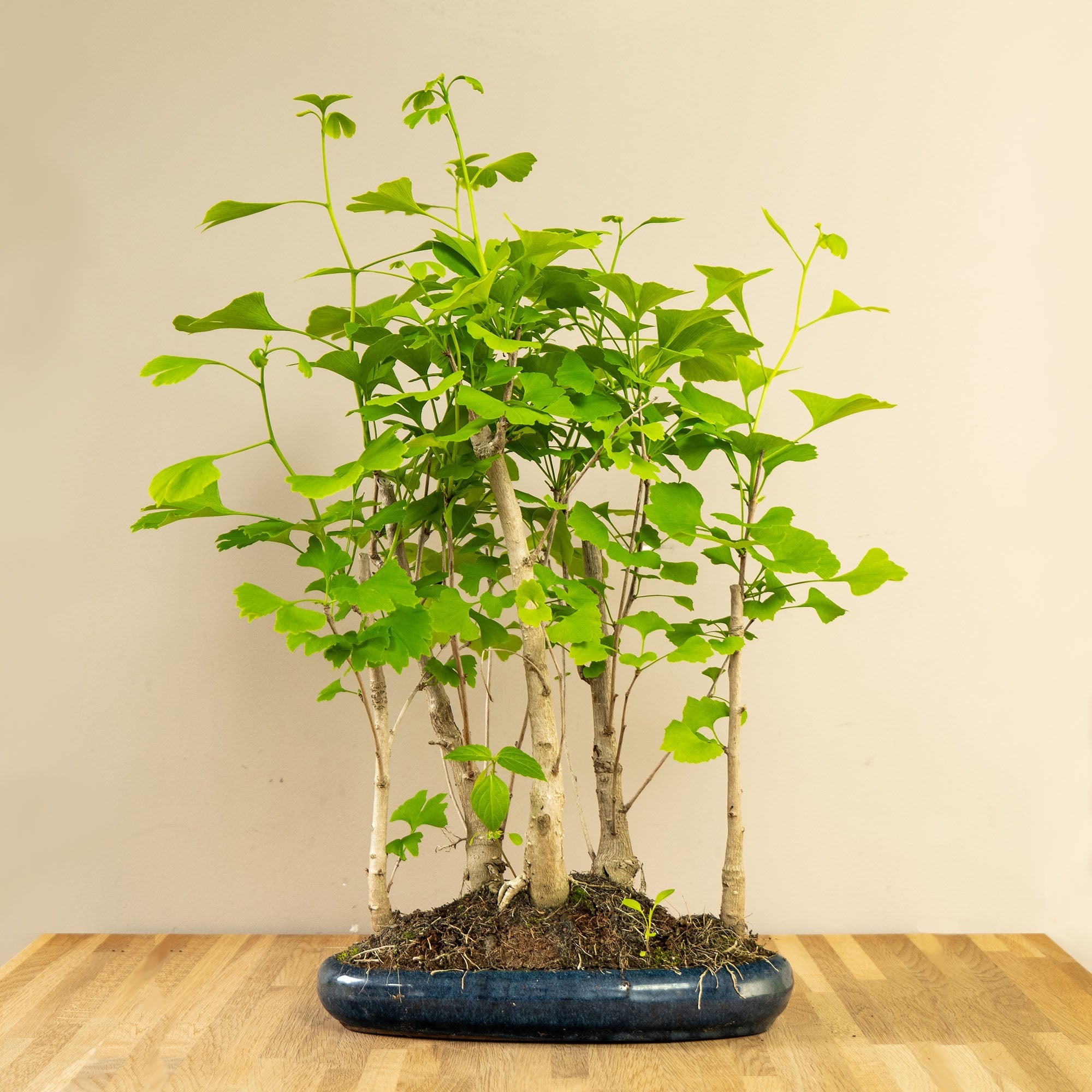
Ginkgo bonsai are easily recognized by their unique fan-shaped leaves and ancient lineage—this species is often referred to as a living fossil. The foliage starts off a bright green in spring and summer, transitioning to a stunning golden yellow in autumn before dropping in winter. Ginkgo trees have a strong, upright growth habit and develop thick, rugged trunks over time, lending them a powerful and dignified appearance.
Native to China, Ginkgo biloba thrives best in USDA zones 4 to 8 and must be grown outdoors for optimal health. It prefers full sun to light shade and benefits from experiencing the full cycle of seasons, especially the cold dormancy in winter. Ginkgo trees are tolerant of urban conditions, pollution, and pests, making them relatively low-maintenance once established.
To care for a Ginkgo bonsai, use a well-draining soil mix and water regularly, ensuring that the soil never dries out completely. Ginkgo is a slow grower, so shaping and wiring must be done gently, ideally in spring when new shoots are flexible. Pruning is best carried out in early summer, and repotting should be done every two to four years in early spring, depending on the tree’s age and root development.
Wisteria Bonsai (Wisteria floribunda)
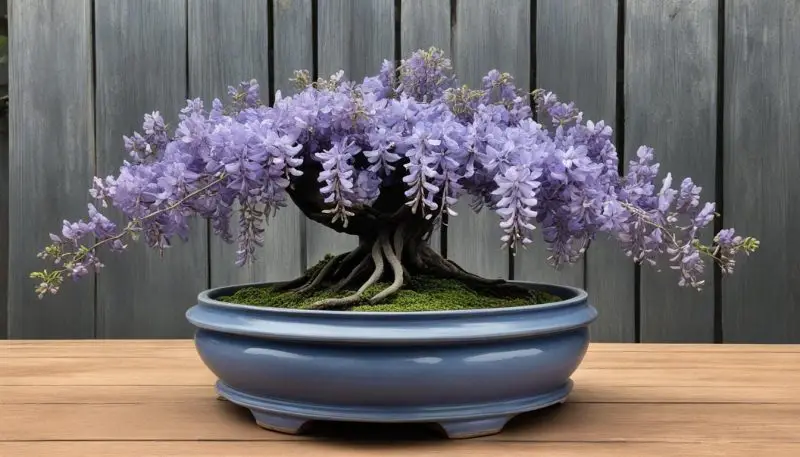
Wisteria bonsai are among the most dramatic and beautiful flowering bonsai, famous for their cascading clusters of fragrant purple, white, or blue blossoms that bloom in late spring to early summer. While their flowers are the main attraction, Wisteria also features compound green leaves and a thick, often gnarled trunk that adds to its ornamental appeal over time.
Wisteria prefers full sun to ensure abundant blooming and grows best in USDA zones 5 to 9. It should be cultivated outdoors, as it requires strong light and a period of cold dormancy during winter. Without sufficient sunlight, flowering may be sparse or nonexistent. These vigorous growers need ample space and regular pruning to maintain bonsai proportions.
To care for a Wisteria bonsai, provide a rich, moisture-retentive soil and water heavily during the growing season, especially when blooming. Fertilize regularly—using a low-nitrogen fertilizer during bloom season to encourage flowers over foliage. Prune after flowering to control size and shape. Repot every one to two years in early spring, as Wisteria has a fast-growing root system.
Crabapple Bonsai (Malus spp.)
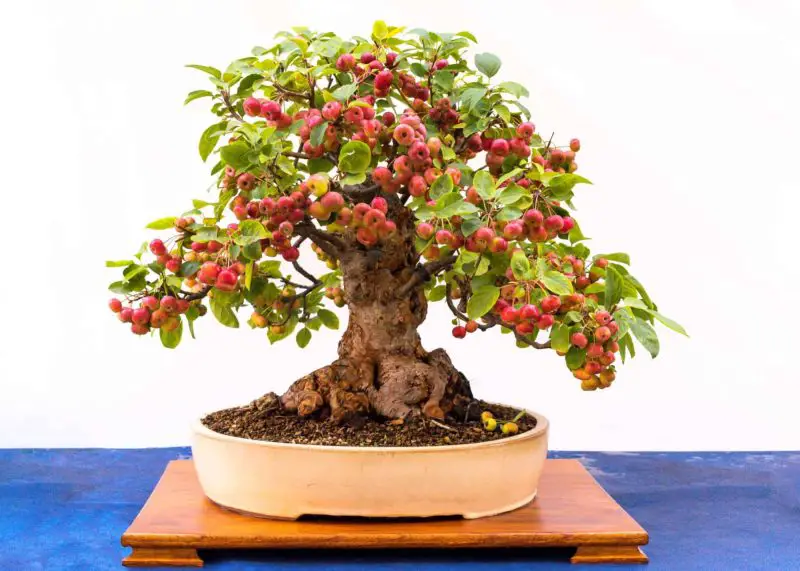
Crabapple bonsai are loved for their stunning seasonal transformations, offering beautiful blossoms in spring, lush green foliage in summer, and small, colorful fruit in fall. The flowers come in shades of white, pink, or red, and the fruit can vary in size and color depending on the species. Crabapple bonsai present a natural and elegant look, often used in informal upright or slanting styles.
These deciduous trees are best suited for outdoor cultivation in USDA zones 4 to 8. They require exposure to full sun to bloom and fruit properly and need a winter dormancy to stay healthy. While fairly hardy, they should be protected from late frosts that can damage emerging flowers or fruits.
For care, plant crabapple bonsai in well-draining soil and keep it consistently moist, especially during flowering and fruiting. Prune after flowering to maintain structure and encourage future blooms. Use a balanced fertilizer in spring and early summer, and reduce feeding as fall approaches. Repot every two to three years in early spring before new growth appears.
Quince Bonsai (Chaenomeles spp.)
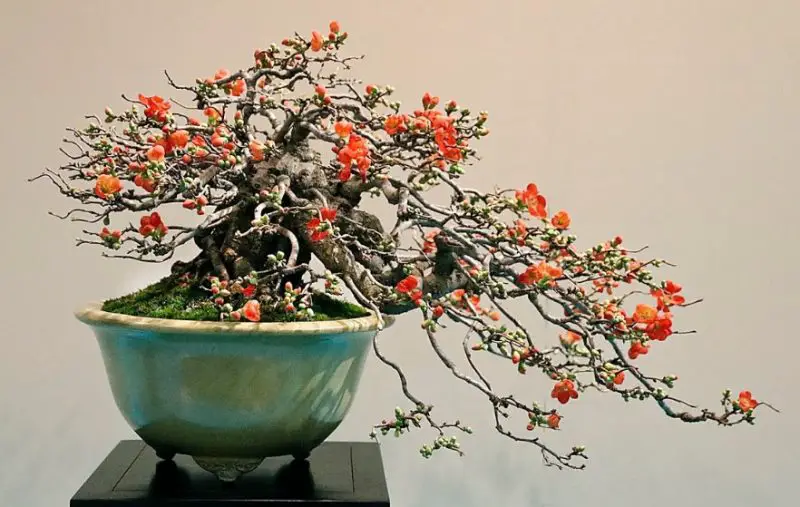
Quince bonsai, especially flowering quince, are admired for their vibrant blooms that emerge in early spring—often before the leaves appear. The flowers are typically red, orange, pink, or white, and they can produce small ornamental fruits later in the season. Their naturally twiggy growth and slightly thorny branches add to the aged and textured appearance ideal for bonsai.
This deciduous shrub prefers outdoor conditions and grows best in USDA zones 5 to 9. It enjoys full sun to partial shade and benefits from winter chill to promote healthy blooms. Quince is cold-hardy but should be shielded from extreme cold and drying winds. It performs best with regular sunlight and good air circulation.
To grow a healthy quince bonsai, use a loamy, well-draining soil mix and water consistently, especially when flowering or fruiting. Prune after the bloom cycle to shape the tree and remove unwanted shoots. Fertilize with a low-nitrogen fertilizer in early spring to promote flowers. Repot every two to three years in early spring, before active growth resumes.
Persimmon Bonsai (Diospyros spp.)
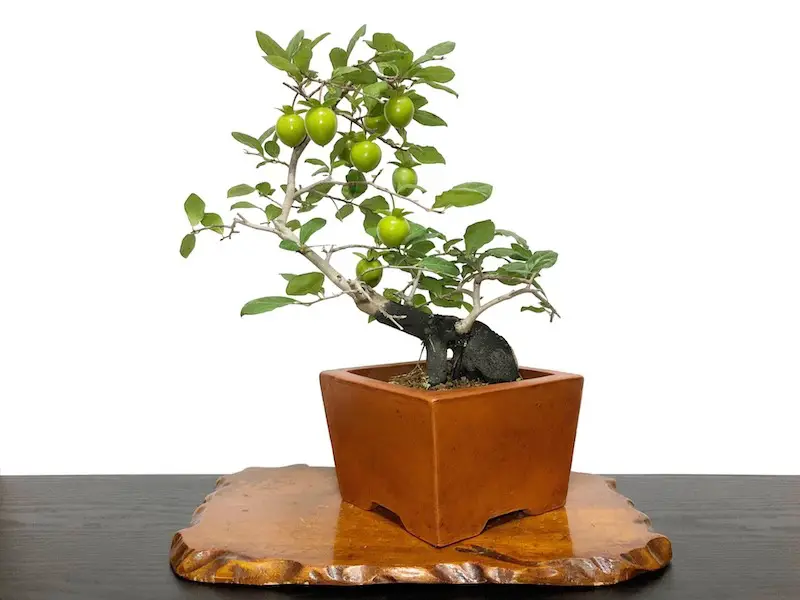
Persimmon bonsai are admired for their ornamental fruits, which resemble small, vibrant orange lanterns in autumn. These deciduous trees also produce attractive oval leaves that turn shades of red and yellow before dropping in fall. The bark becomes beautifully textured and cracked with age, lending a mature and refined appearance to the bonsai.
Native to Asia and parts of North America, persimmon species used for bonsai prefer outdoor cultivation in USDA zones 6 to 9. They require full sun to encourage strong growth and fruit development. These trees need a cold winter dormancy to thrive and are not suitable for indoor growth. They also benefit from being sheltered from late frosts during early spring when buds start forming.
To care for a persimmon bonsai, provide a well-draining soil and water regularly, keeping the soil moist but not soggy. Fertilize during the growing season, using a low-nitrogen fertilizer once fruit starts developing. Prune after leaf fall to shape the structure, and repot every two to three years in early spring. Persimmons can be wired, but branches are brittle and should be handled carefully.
Mulberry Bonsai (Morus spp.)
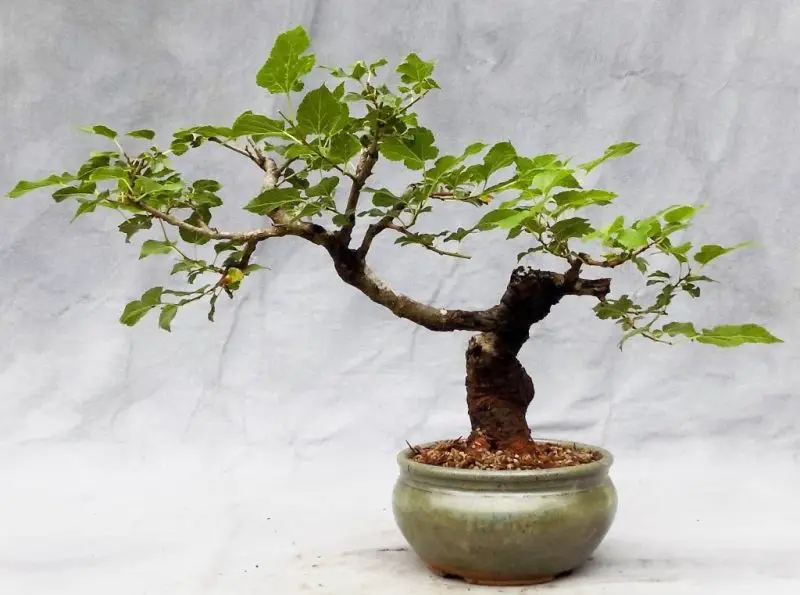
Mulberry bonsai are known for their broad, textured leaves and sweet fruits that can range from red to deep purple, depending on the species. The foliage is typically dense and lush, offering a dramatic contrast to the tree’s gnarled trunk and rough bark. Some species also produce charming catkin-like flowers in spring, adding to their seasonal appeal.
Best suited for outdoor cultivation, mulberry bonsai grow well in USDA zones 5 to 9. They prefer full sun to partial shade and need a dormancy period in winter. These trees grow rapidly during the warmer months, so they require regular pruning to maintain size and structure. While hardy, they should be protected from hard frosts and sudden temperature drops.
To grow a healthy mulberry bonsai, use a nutrient-rich, well-draining soil mix and water frequently during the growing season. Prune aggressively to control leaf size and shape, and pinch back new shoots to maintain density. Repot every two years in early spring, and apply a balanced fertilizer from spring through summer to support healthy growth and fruiting.
Bougainvillea Bonsai (Bougainvillea spp.)
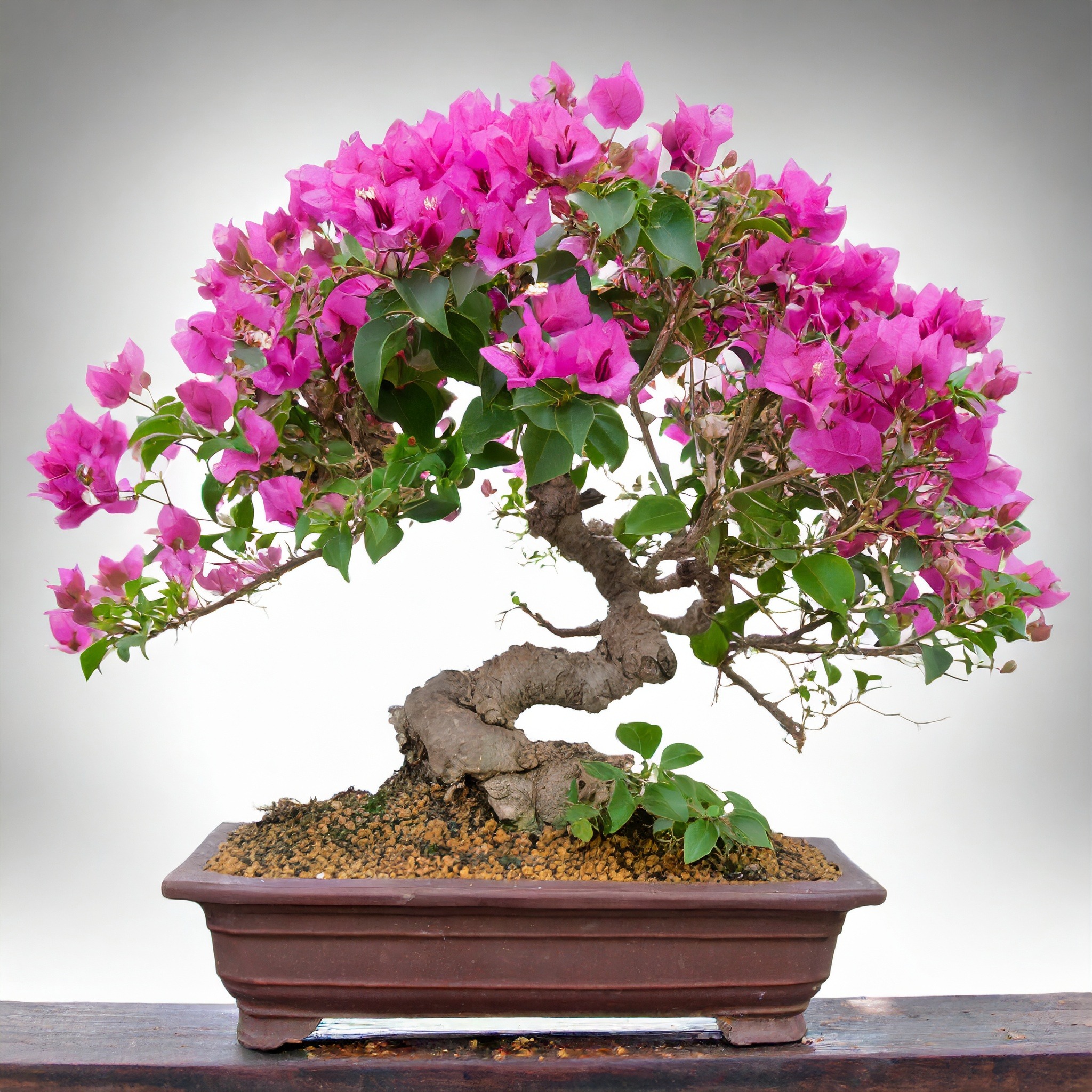
Bougainvillea bonsai are celebrated for their vivid, paper-like bracts that come in colors such as magenta, purple, red, pink, or orange. These colorful bracts surround the small white flowers and create a striking display during the warmer months. The plant also features twisted, woody trunks and sharp thorns, giving it a rugged Mediterranean charm.
This tropical and subtropical species is best grown in USDA zones 9 to 11 and thrives in full sun. Bougainvillea bonsai need warm temperatures and should be brought indoors or into a greenhouse if temperatures drop below 40°F (4°C). They require plenty of light to bloom profusely and should be placed near a sunny window if kept indoors temporarily.
For proper care, plant in well-draining, sandy soil and allow the soil to dry slightly between waterings. Overwatering can cause root rot. Prune after each flowering cycle to promote branching and maintain shape. Use a phosphorus-rich fertilizer during the blooming season, and repot every two to three years in spring. Wiring should be done cautiously, as the branches can be brittle.
Flowering & Fruiting Bonsai Trees
Cherry Blossom Bonsai (Prunus serrulata)

Cherry Blossom bonsai, derived from the Japanese cherry tree, are cherished for their delicate and fragrant springtime blooms. The soft pink or white flowers appear in profusion, often before the leaves emerge, creating a breathtaking spectacle. These deciduous trees also display elegant bark and finely serrated leaves that provide seasonal interest throughout the year.
Native to East Asia, Cherry Blossom bonsai are best suited for outdoor environments and grow well in USDA zones 5 to 8. They thrive in full sun and need cold winter dormancy to stay healthy and produce abundant flowers. These trees can be sensitive to temperature extremes and should be protected from strong winds and late spring frosts that may damage buds.
To care for a Cherry Blossom bonsai, use well-draining soil and water regularly to keep the soil evenly moist, especially during flowering. Prune after the bloom to maintain structure and encourage next year’s blossoms. Fertilize with a low-nitrogen fertilizer during the growing season. Repot every two to three years in early spring before new growth begins.
Plum Bonsai (Prunus mume)
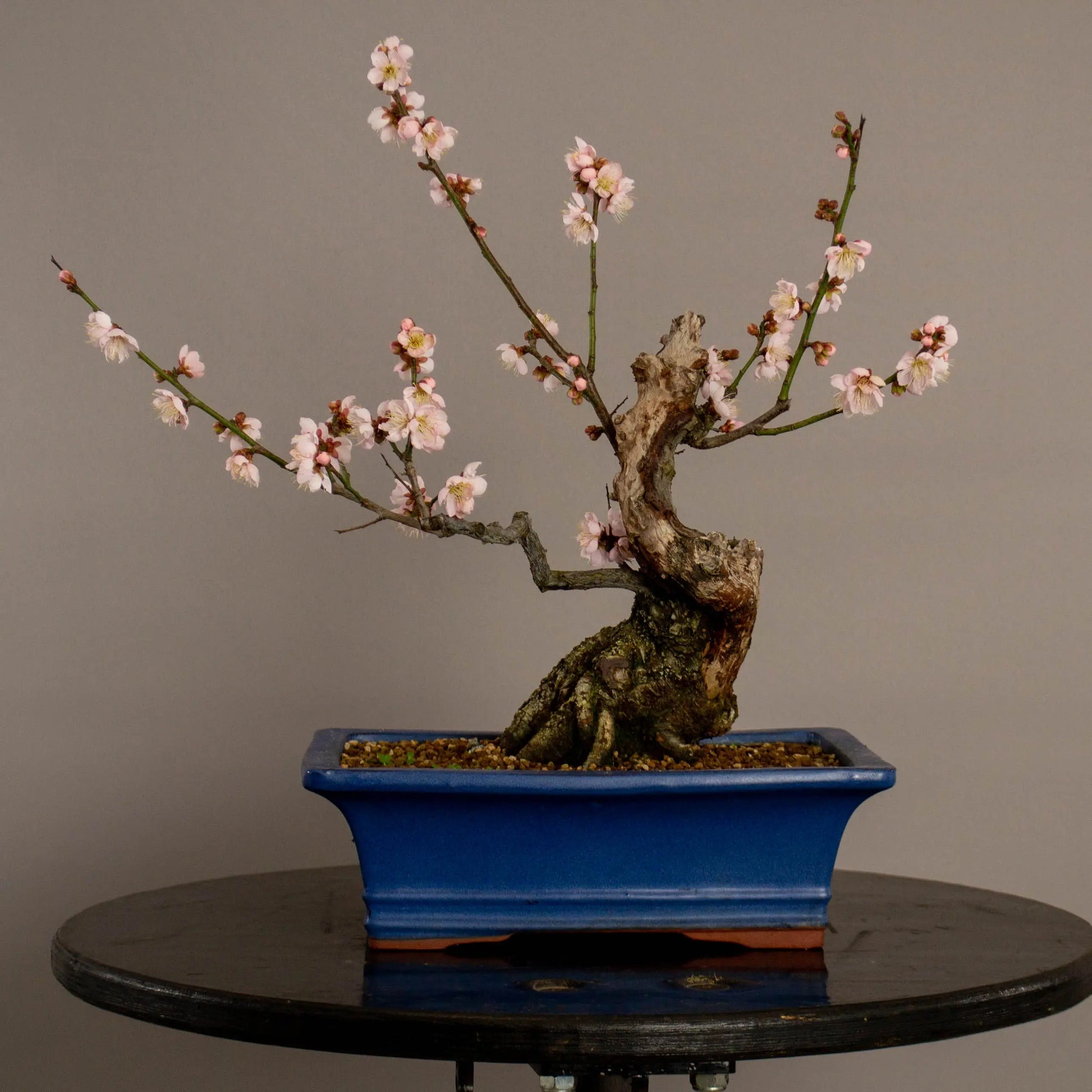
Plum bonsai, especially the Japanese apricot (Prunus mume), are admired for their early-blooming, fragrant flowers that appear in late winter or early spring. The blossoms range in color from white and pink to red and often emerge while the tree is still bare. Their gracefully arching branches and rugged bark give them an elegant, aged appearance.
Prunus mume grows best outdoors in USDA zones 6 to 9 and prefers a location with full sun to encourage flowering. Like other deciduous trees, it requires a period of winter dormancy and should not be grown indoors. It is cold-hardy but should be sheltered from harsh winds and deep freezes during dormancy.
For care, plant in well-draining soil and water consistently, especially during bloom and fruiting periods. Fertilize with a balanced or low-nitrogen formula to promote blooms. Prune after flowering to maintain shape and remove crossing branches. Repot every two years in early spring, just before new buds open.
Pomegranate Bonsai (Punica granatum)
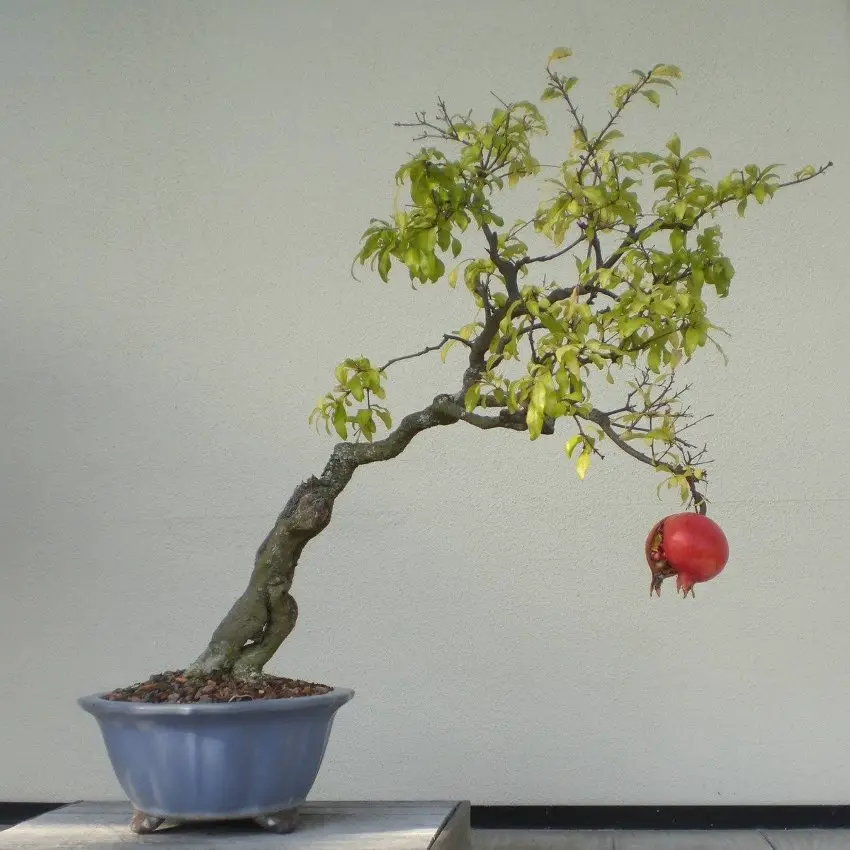
Pomegranate bonsai are known for their striking orange-red trumpet-shaped flowers and glossy, narrow leaves. In ideal conditions, they also produce small ornamental fruits that add visual interest well into fall. The bark becomes twisted and textured with age, enhancing the bonsai’s ancient and dramatic appearance.
Native to the Mediterranean and Middle East, pomegranate bonsai thrive in USDA zones 7 to 10 and prefer full sun. While they enjoy warmth, they can tolerate brief periods of cold but should be protected from frost. In cooler climates, they may be grown in containers and brought indoors or into a greenhouse during winter.
To grow a healthy pomegranate bonsai, use well-draining sandy or loamy soil and water regularly during the growing season. Allow the top layer to dry slightly between waterings to prevent root rot. Prune in early spring to shape and encourage flowering. Fertilize with a low-nitrogen blend to promote blooms and fruit, and repot every two years in early spring.
Peach Bonsai (Prunus persica)
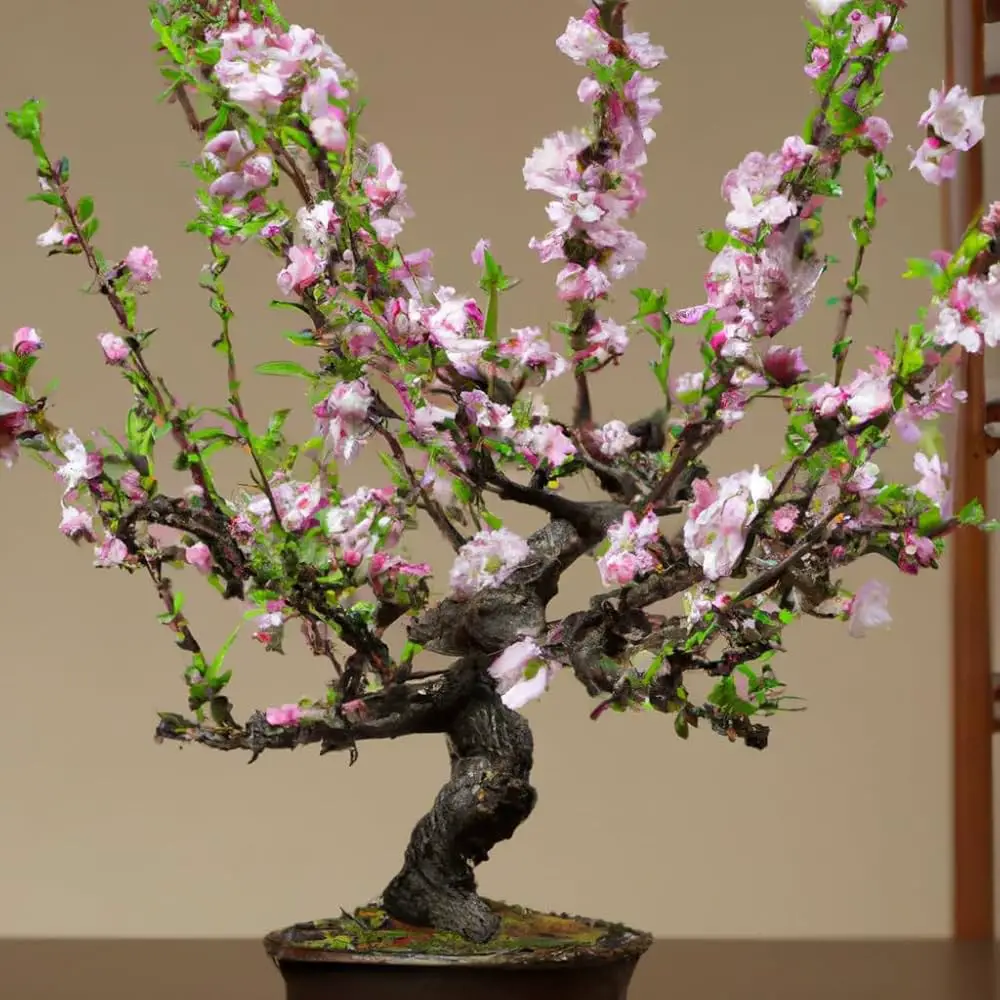
Peach bonsai are prized for their elegant pink spring blossoms and fine-textured leaves. Some varieties may even produce small peaches, adding ornamental interest to their seasonal cycle. With their naturally graceful branching and beautifully textured bark, peach bonsai offer both floral beauty and visual character.
Best grown outdoors in USDA zones 6 to 9, peach bonsai need full sun and a cold winter dormancy for healthy growth and flowering. These trees are sensitive to humidity and temperature swings, so careful placement and seasonal protection are important. They do not perform well as indoor bonsai due to their dormancy requirements.
Use a well-draining soil mix and keep it evenly moist, especially during the blooming and fruiting season. Prune after flowering to maintain the tree’s shape and remove unwanted growth. Fertilize in spring and early summer with a balanced formula, and repot every two years in late winter before buds begin to swell.
Citrus Bonsai (Citrus spp., e.g., Calamondin, Lemon, Orange)
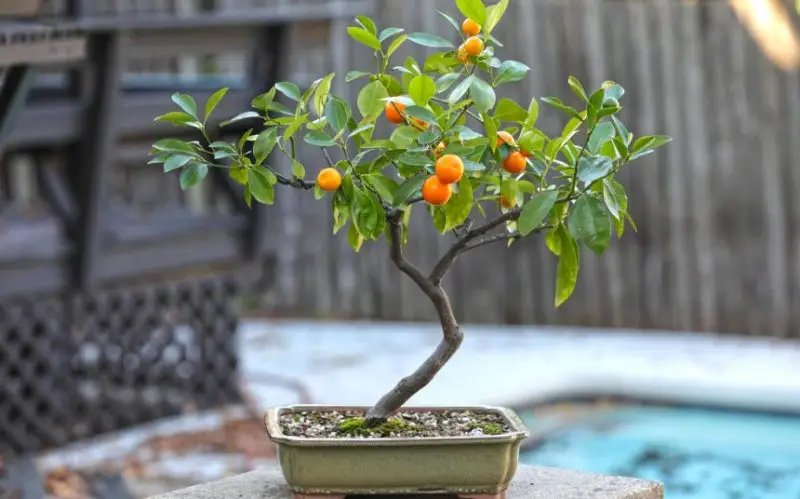
Citrus bonsai trees are celebrated for their glossy evergreen foliage, fragrant white blossoms, and miniature fruit, which often persists for months. Common species like Calamondin, lemon, and orange make excellent bonsai subjects, offering a delightful combination of ornamental appeal and subtle fragrance.
These tropical and subtropical trees grow best in USDA zones 9 to 11 and thrive in full sun. They require warmth and lots of light, making them ideal for indoor cultivation in bright areas or greenhouses in cooler climates. While they can tolerate short periods outdoors in warm weather, protection from cold drafts and frost is essential.
To care for citrus bonsai, provide a well-draining soil and water regularly, allowing the soil to dry slightly between watering. Feed with a citrus-specific or balanced fertilizer rich in micronutrients. Prune after flowering to shape and control size, and repot every two to three years in early spring. Ensure they receive at least six hours of direct sunlight daily.
Tropical & Subtropical Bonsai Trees
Brazilian Rain Tree Bonsai (Pithecellobium tortum)
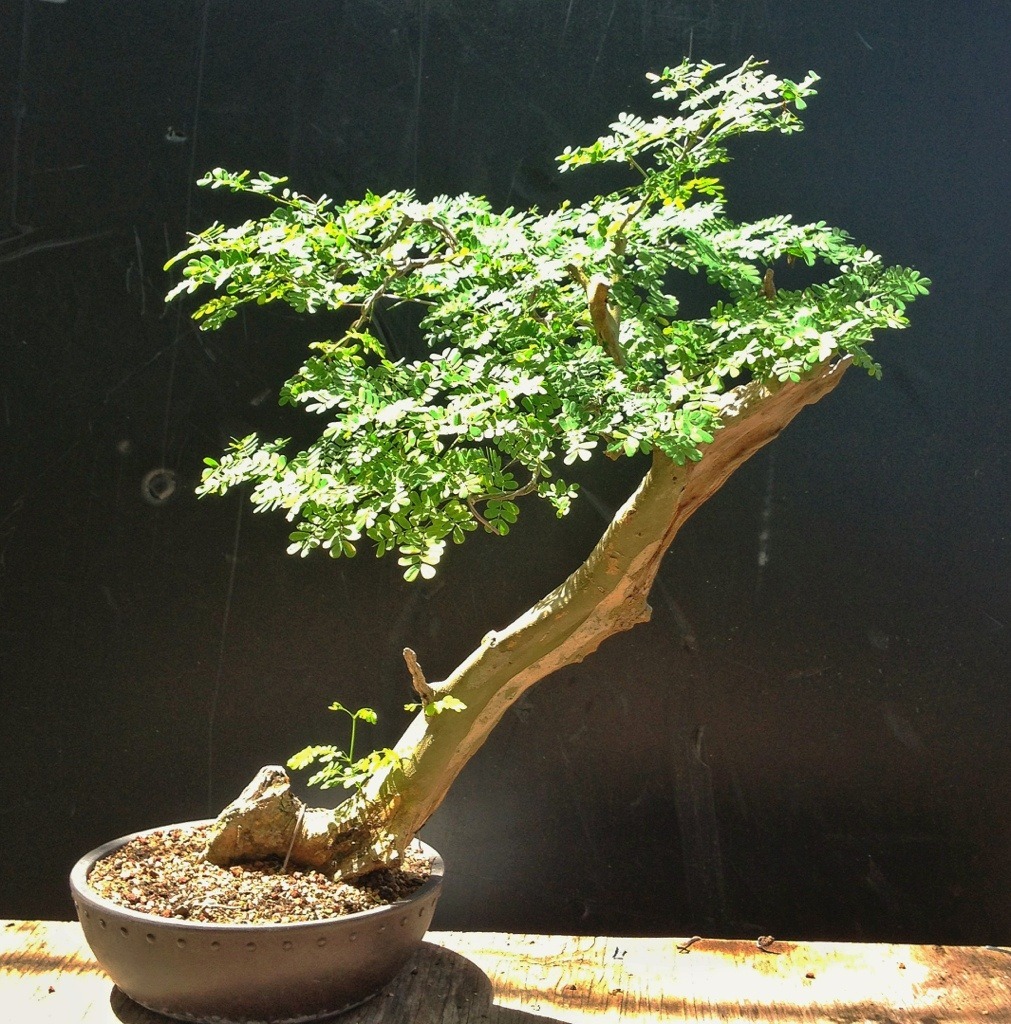
The Brazilian Rain Tree bonsai is an exotic species known for its delicate, fern-like leaves and unique behavior. Its leaflets fold up during the night or in response to rain, giving the tree a dynamic and lively appearance. This species is also recognized for its intricate trunk and rapid growth, with the potential to develop thick, twisted trunks when trained well.
Native to South America, particularly Brazil, the Brazilian Rain Tree thrives in USDA zones 10 to 11 and prefers warm, tropical climates. While it can tolerate some indoor environments, it thrives best outdoors where it can receive ample sunlight. It requires a warm climate to maintain its distinctive folding leaves and grow to its full potential.
To care for a Brazilian Rain Tree bonsai, provide it with well-draining soil and water it regularly, allowing the top layer of soil to dry out between waterings. Keep it in a spot with bright, indirect sunlight and maintain humidity levels with occasional misting. Prune to shape the tree and encourage the development of its twisted trunk, and repot every two to three years in spring.
Tamarind Bonsai (Tamarindus indica)

Tamarind bonsai are known for their striking appearance, featuring delicate, feathery leaves and distinct, twisted branches. The tree produces small, sweet-sour pods that contain edible seeds, adding an extra element of interest to its aesthetic. Tamarind trees develop a thick, gnarled trunk as they mature, making them an excellent choice for bonsai enthusiasts.
Native to Africa and widely cultivated in tropical regions, the Tamarind bonsai thrives in USDA zones 10 to 12. It requires a warm, sunny environment with consistent temperatures, making it best suited for outdoor cultivation in warmer climates. It can be grown indoors in cooler climates if placed in a bright location with good air circulation.
To care for a Tamarind bonsai, ensure it is planted in well-draining soil and water it deeply but infrequently, allowing the soil to dry slightly between waterings. Tamarind bonsai require full sun for optimal growth and flowering. Prune after flowering to shape the canopy and maintain the tree’s structure. Repot every two to three years, preferably in the spring before new growth begins.
Bald Cypress Bonsai (Taxodium distichum)
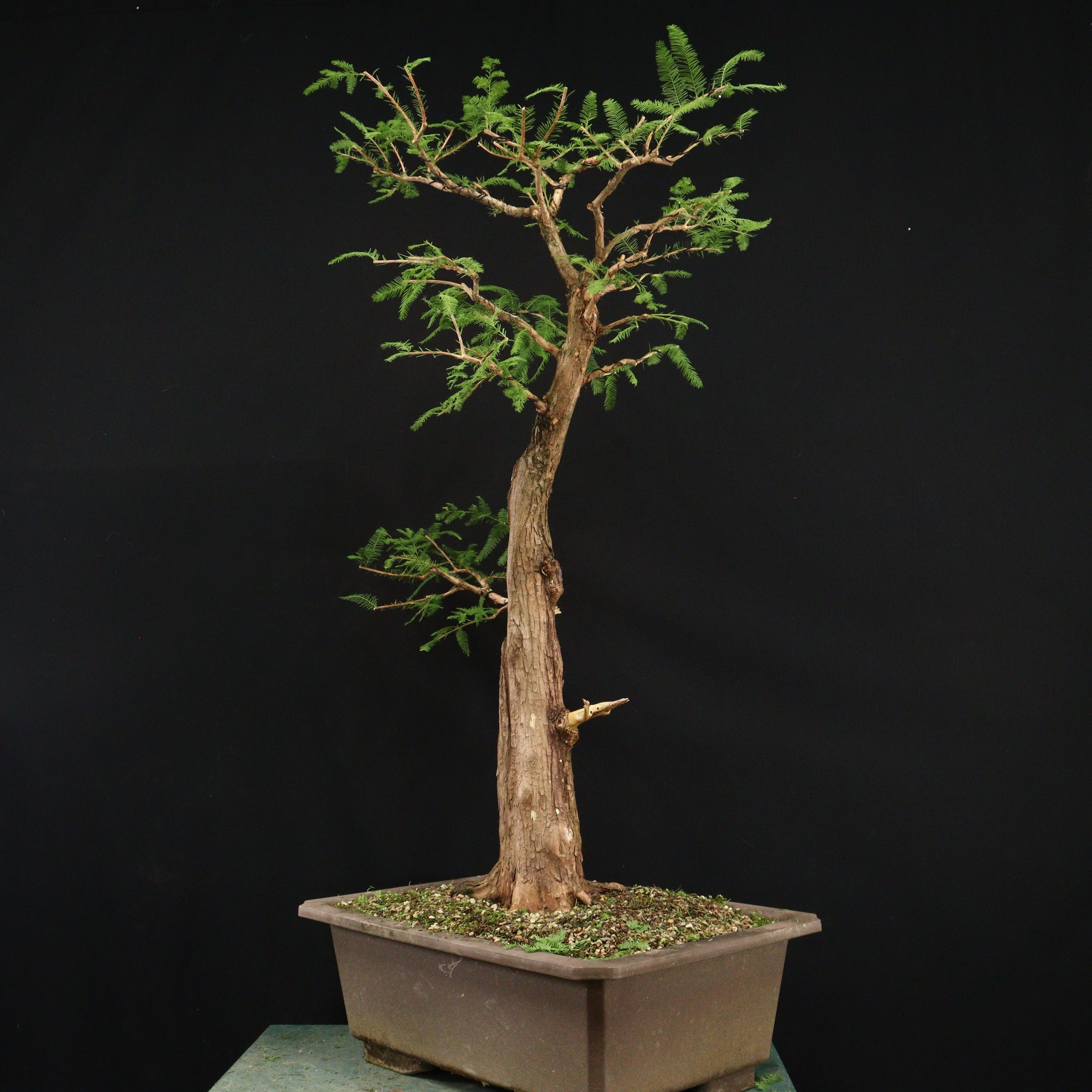
The Bald Cypress bonsai is a stunning deciduous conifer known for its striking feathery, soft foliage that turns bronze and orange in the fall. It also produces unique “knees” or root projections when grown in wet conditions, which contribute to its distinctive appearance. Over time, it develops a thick, knotted trunk and a graceful, upright silhouette.
Native to the southeastern United States, the Bald Cypress bonsai thrives in USDA zones 4 to 10 and prefers wet, swampy environments. It can tolerate a range of growing conditions but thrives in moist soil and requires periodic watering. While it can be kept indoors, it performs best when grown outdoors where it can receive full sunlight and plenty of moisture.
To care for a Bald Cypress bonsai, plant it in a container with excellent drainage and ensure consistent watering, especially during the growing season. While it enjoys moisture, avoid waterlogging the soil. Prune regularly to maintain shape and prevent overgrowth. Repot every two to three years in spring, and be sure to maintain a high humidity environment to promote healthy foliage.


